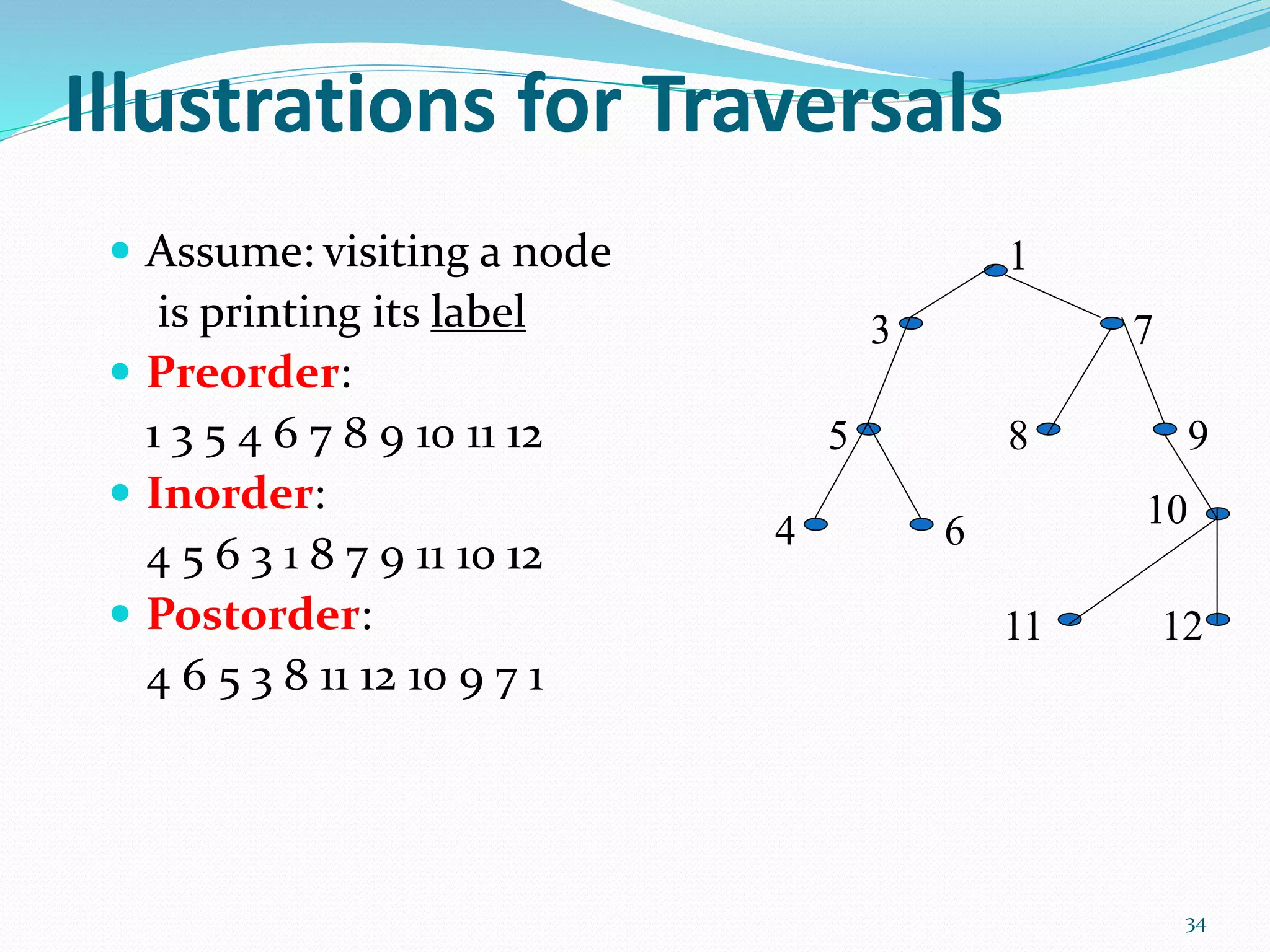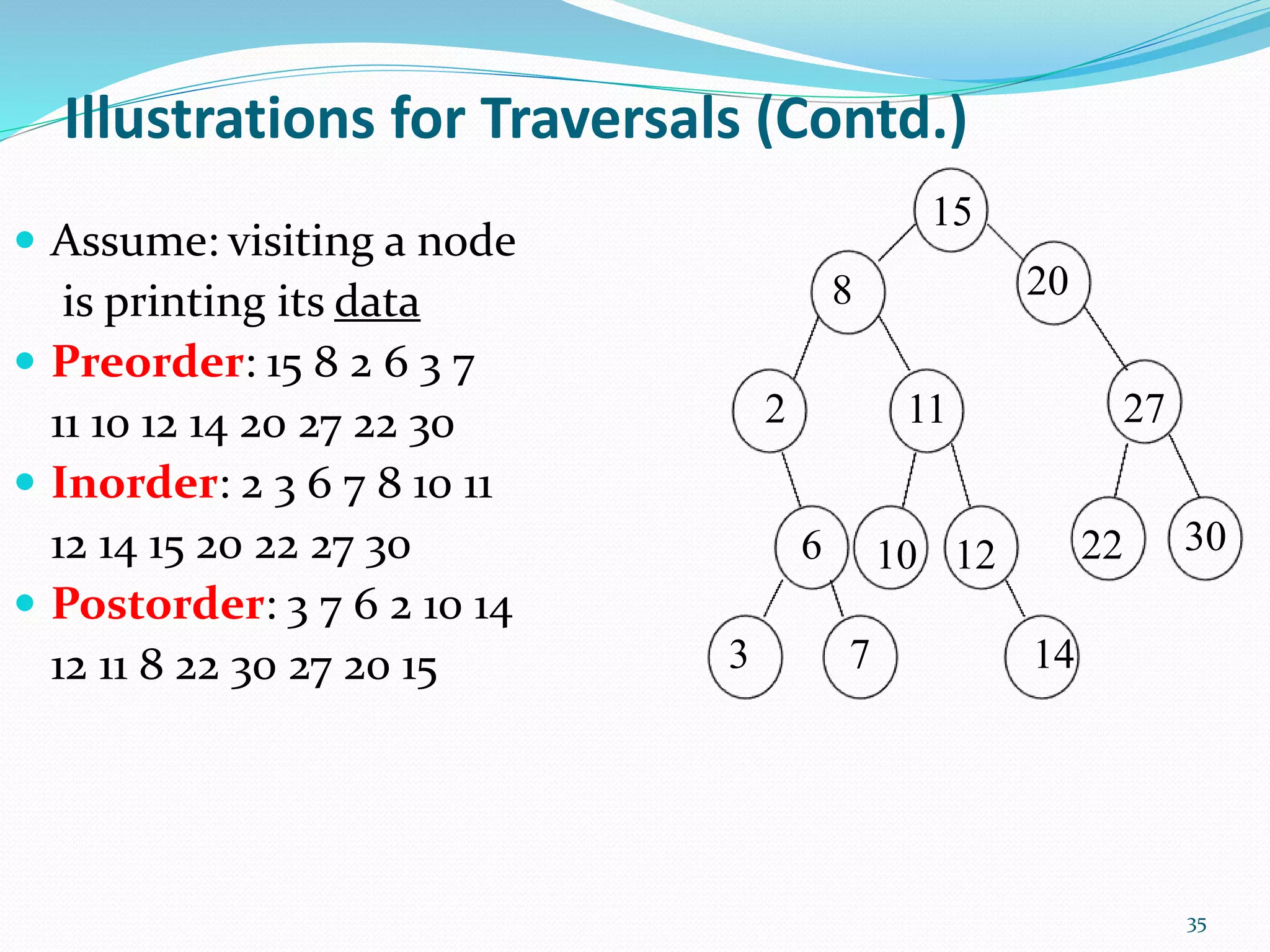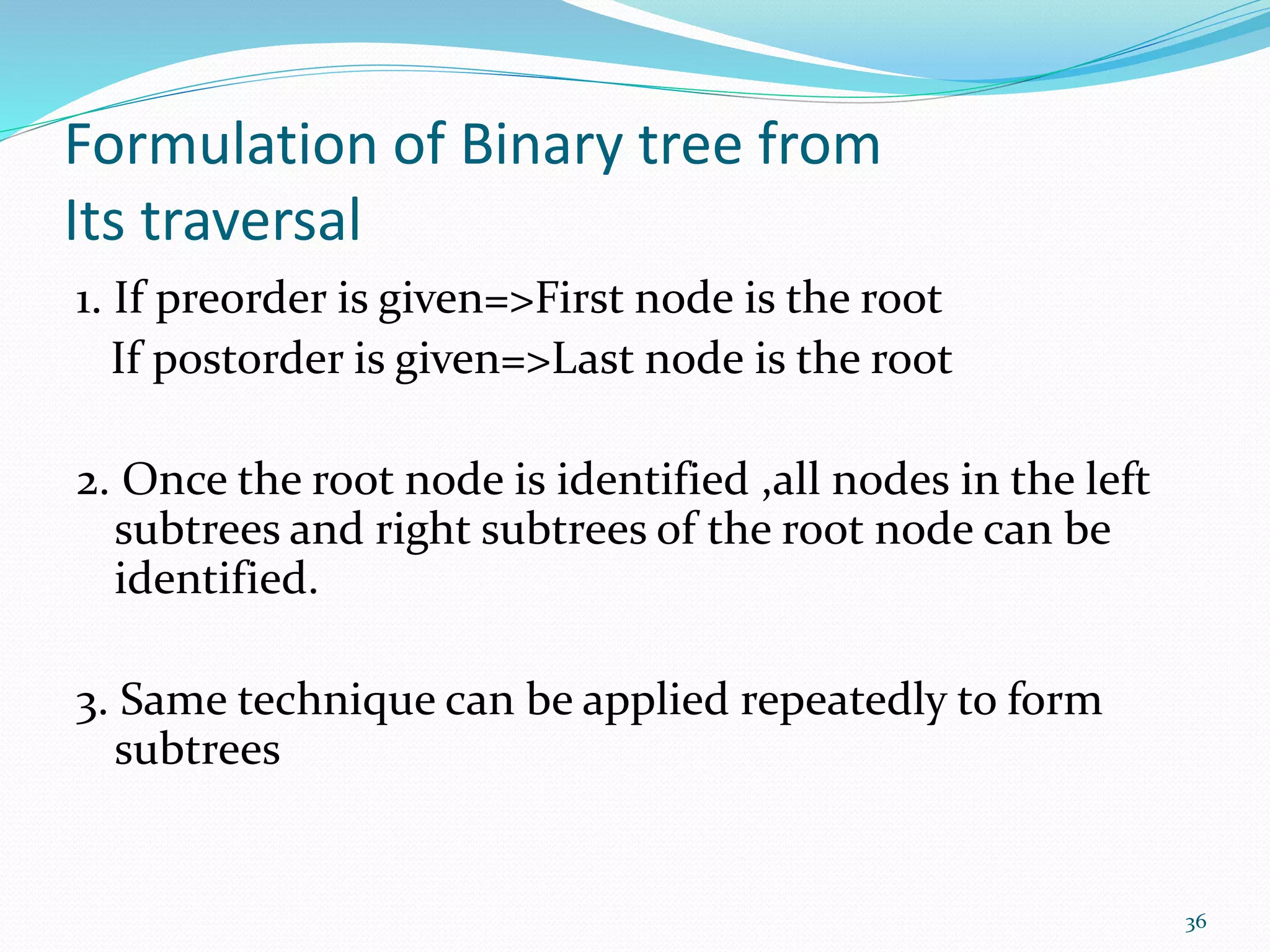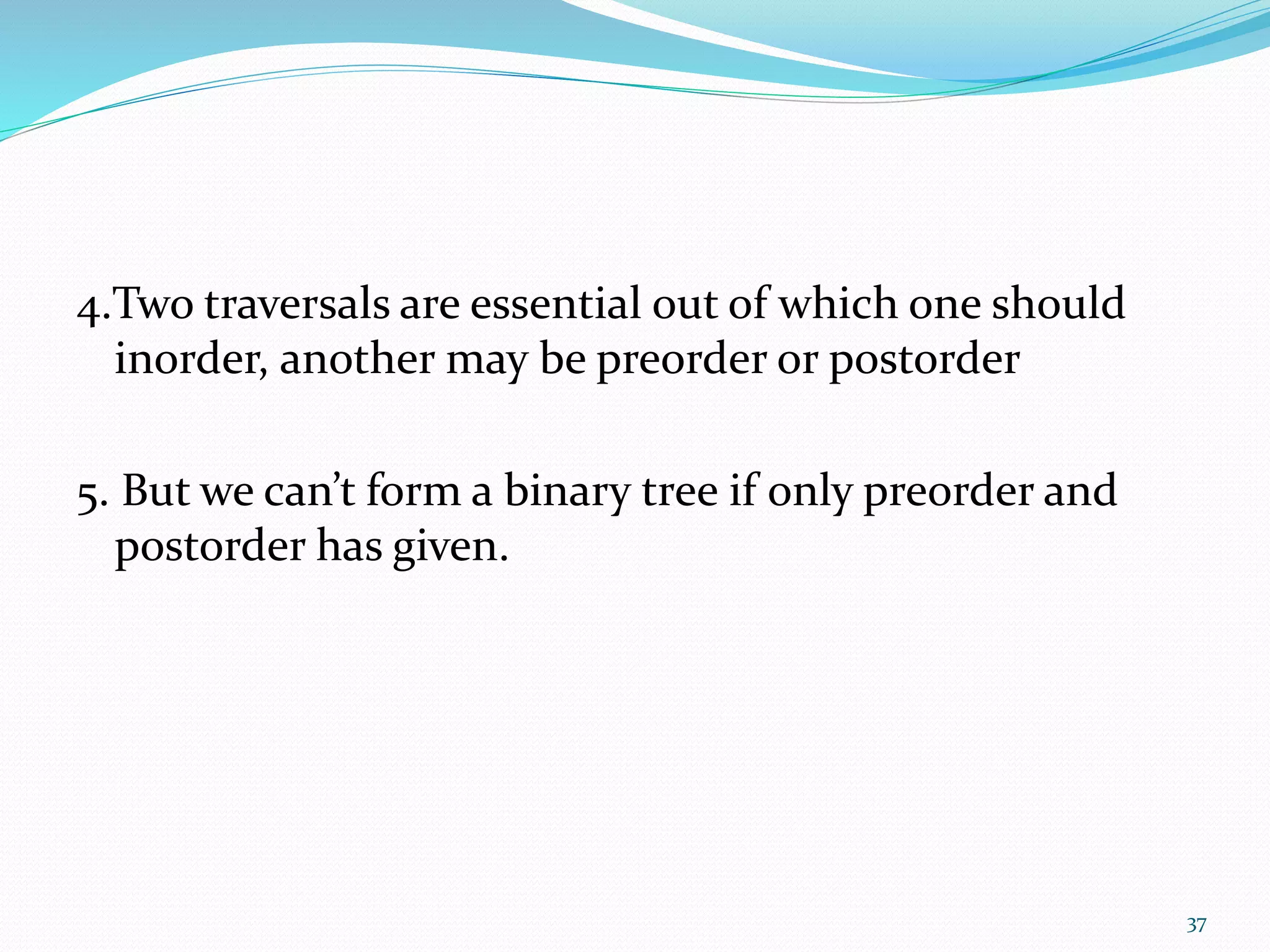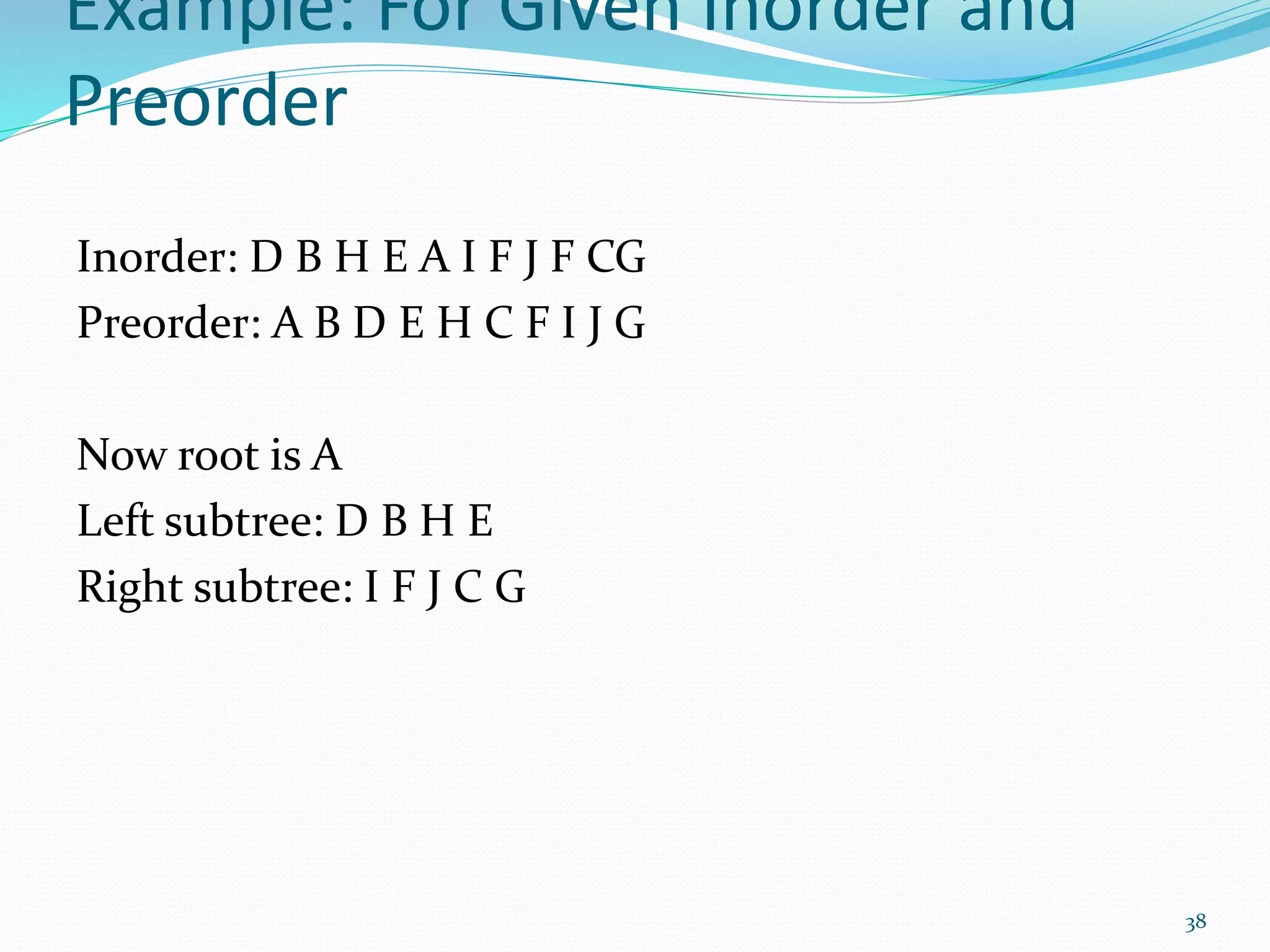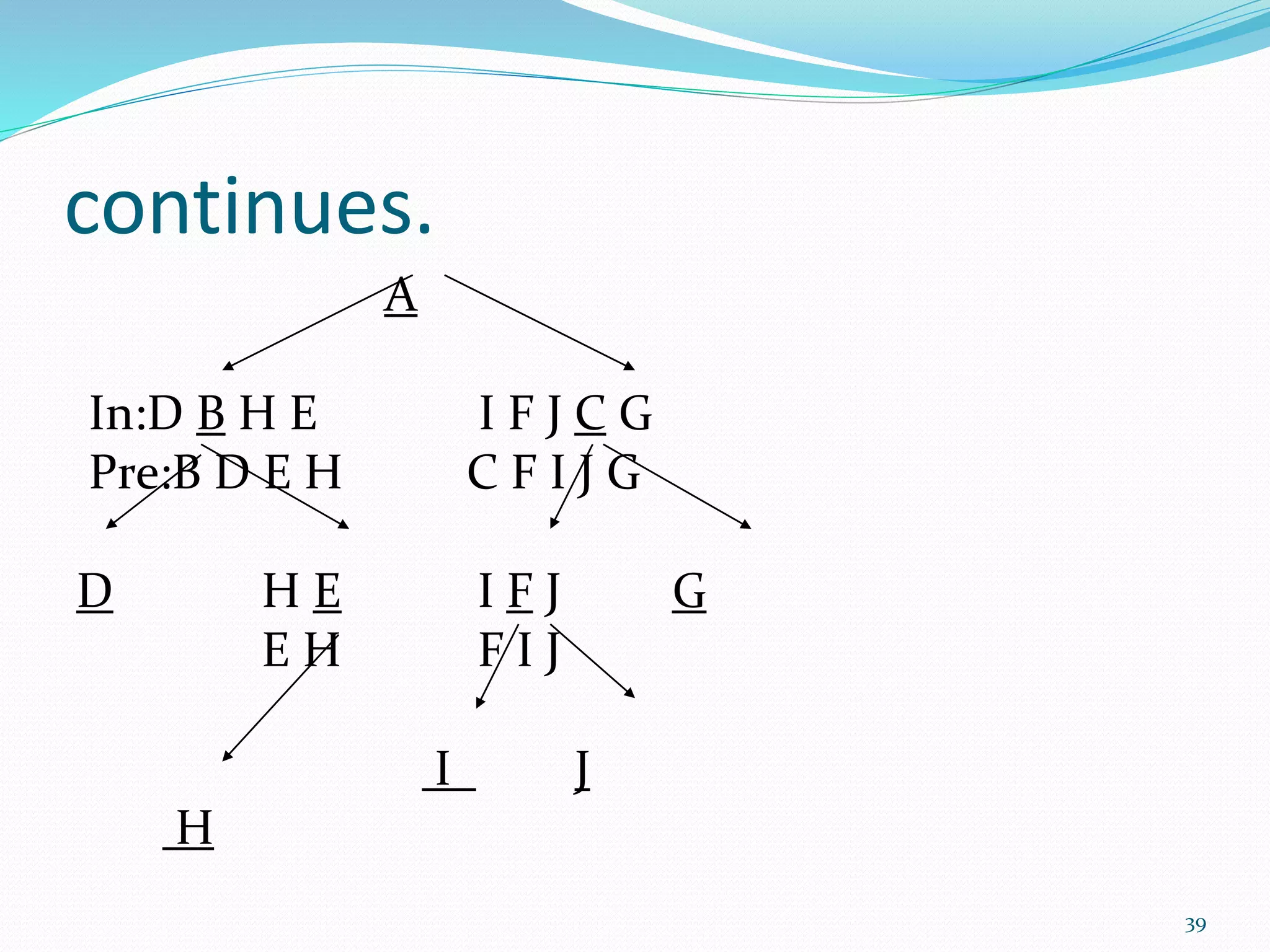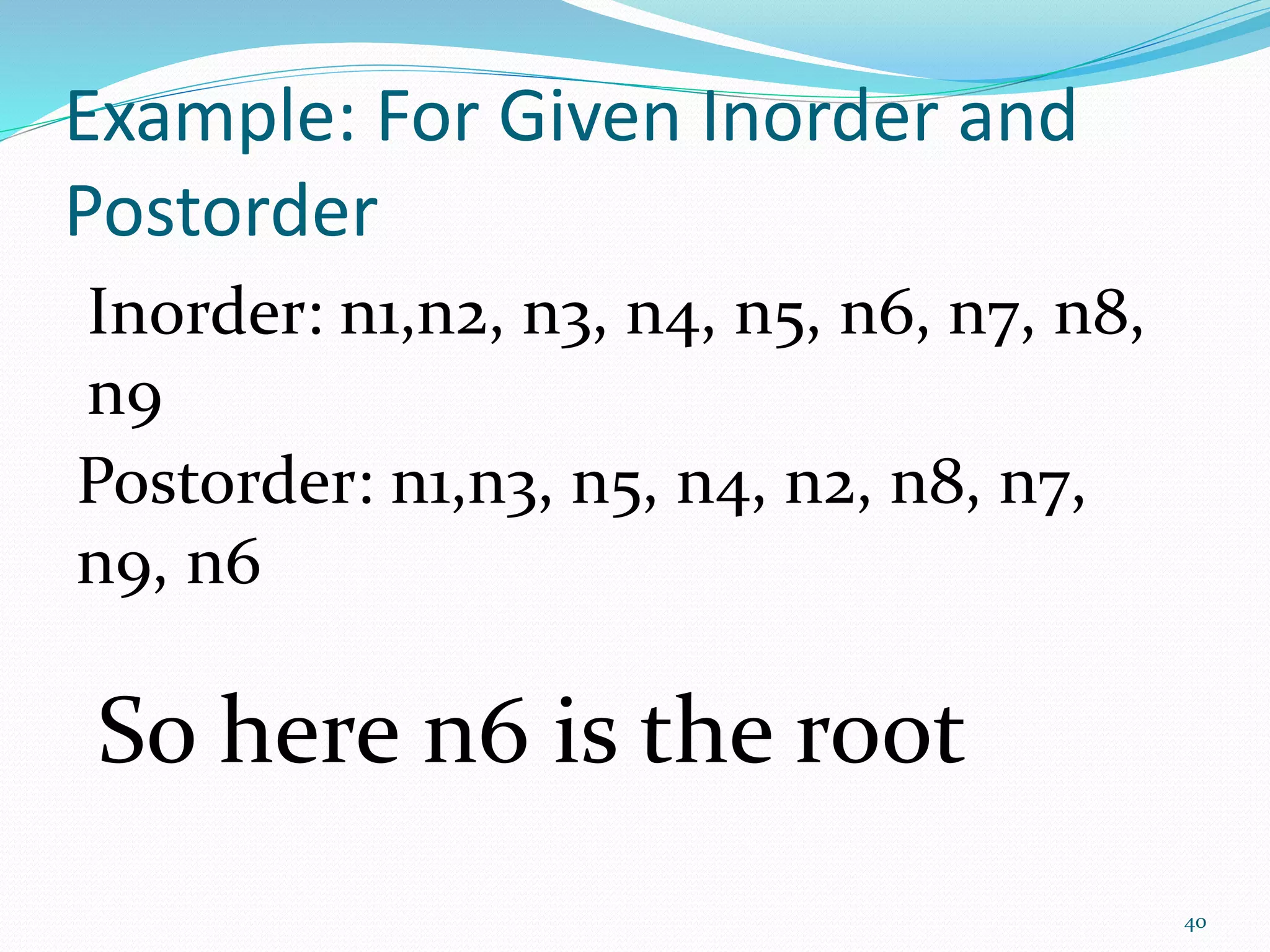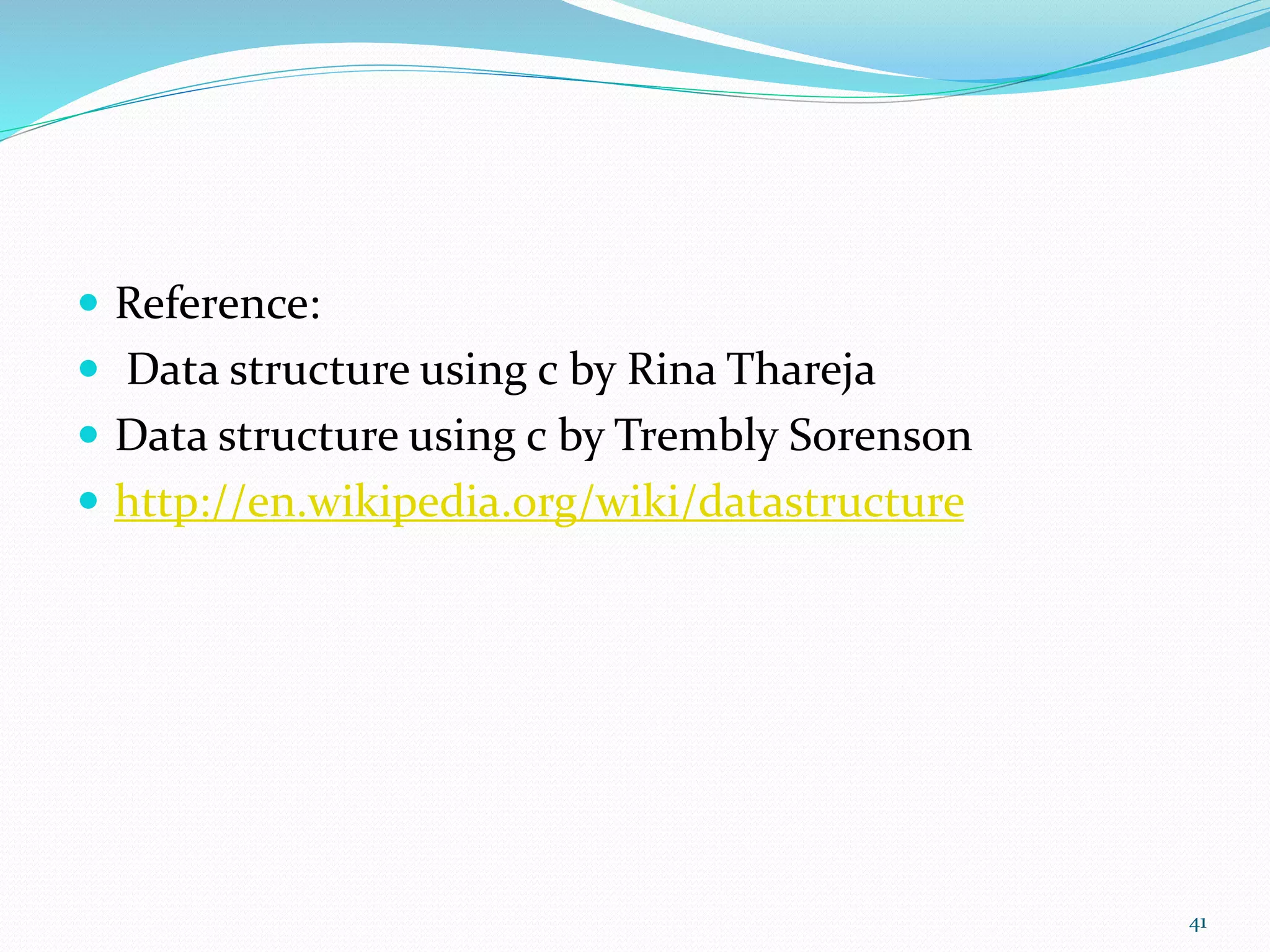The document defines trees and binary trees. A tree consists of nodes connected by branches, with one root node and zero or more subtrees. A binary tree restricts each node to have at most two children. The document discusses tree terminology like root, child, parent, leaf nodes. It also covers tree traversal methods like preorder, inorder and postorder. Finally, it shows how to construct a binary tree from its traversals.
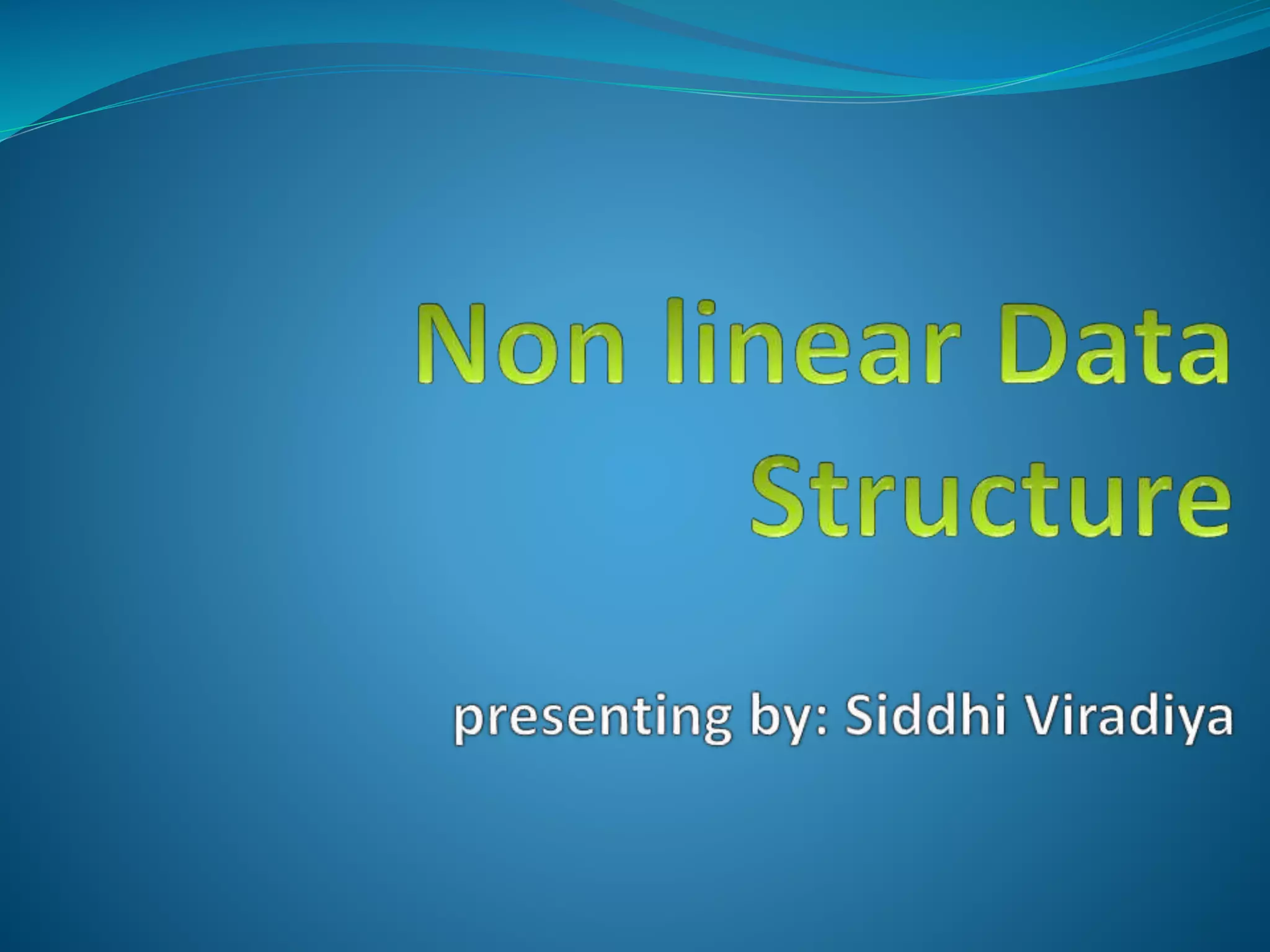
![Tree A tree is defined as a finite set of one or more nodes such that [a] There is a specially designated node called the root and [b] The rest of the nodes could be partitioned into t disjoint sets (t >0) each set representing a tree Ti, i=1,2, . . . t known as sub tree of the tree. 2](https://image.slidesharecdn.com/tree2-141117221136-conversion-gate01/75/non-linear-data-structure-introduction-of-tree-2-2048.jpg)
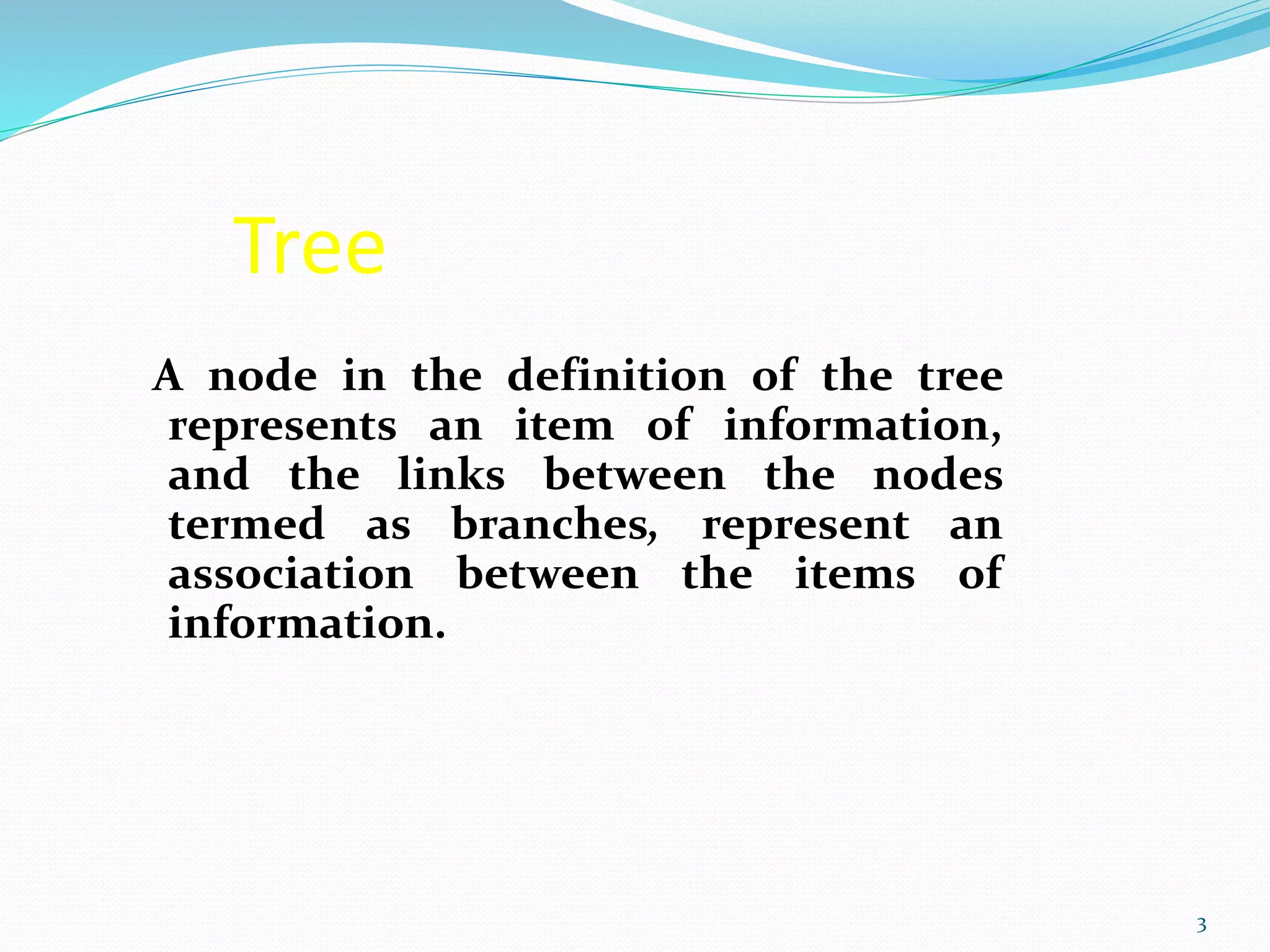
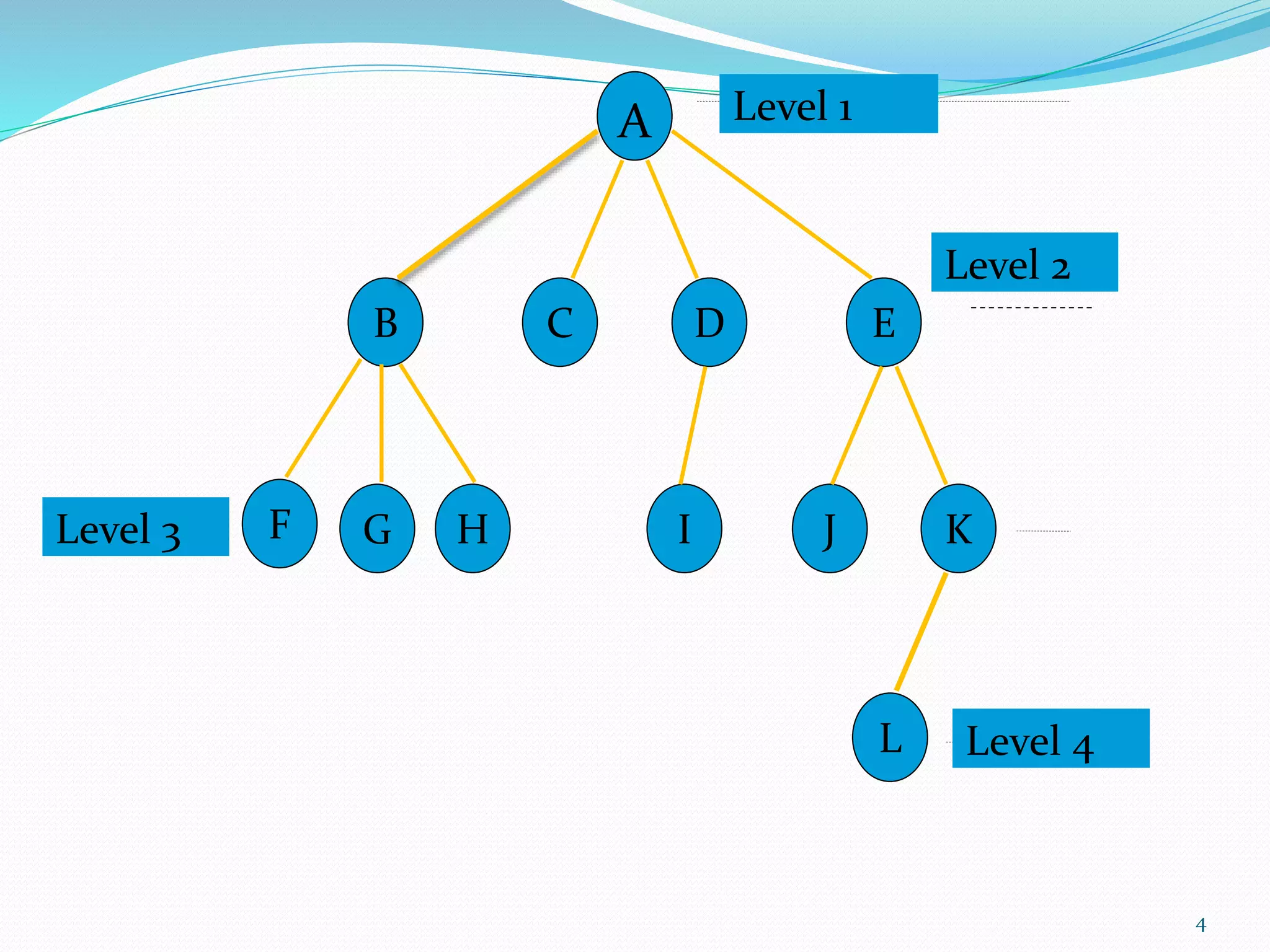
![Tree Definition of Tree emphasizes on the aspect of [a] Connectedness, and [b] Absence of closed loops 5](https://image.slidesharecdn.com/tree2-141117221136-conversion-gate01/75/non-linear-data-structure-introduction-of-tree-5-2048.jpg)
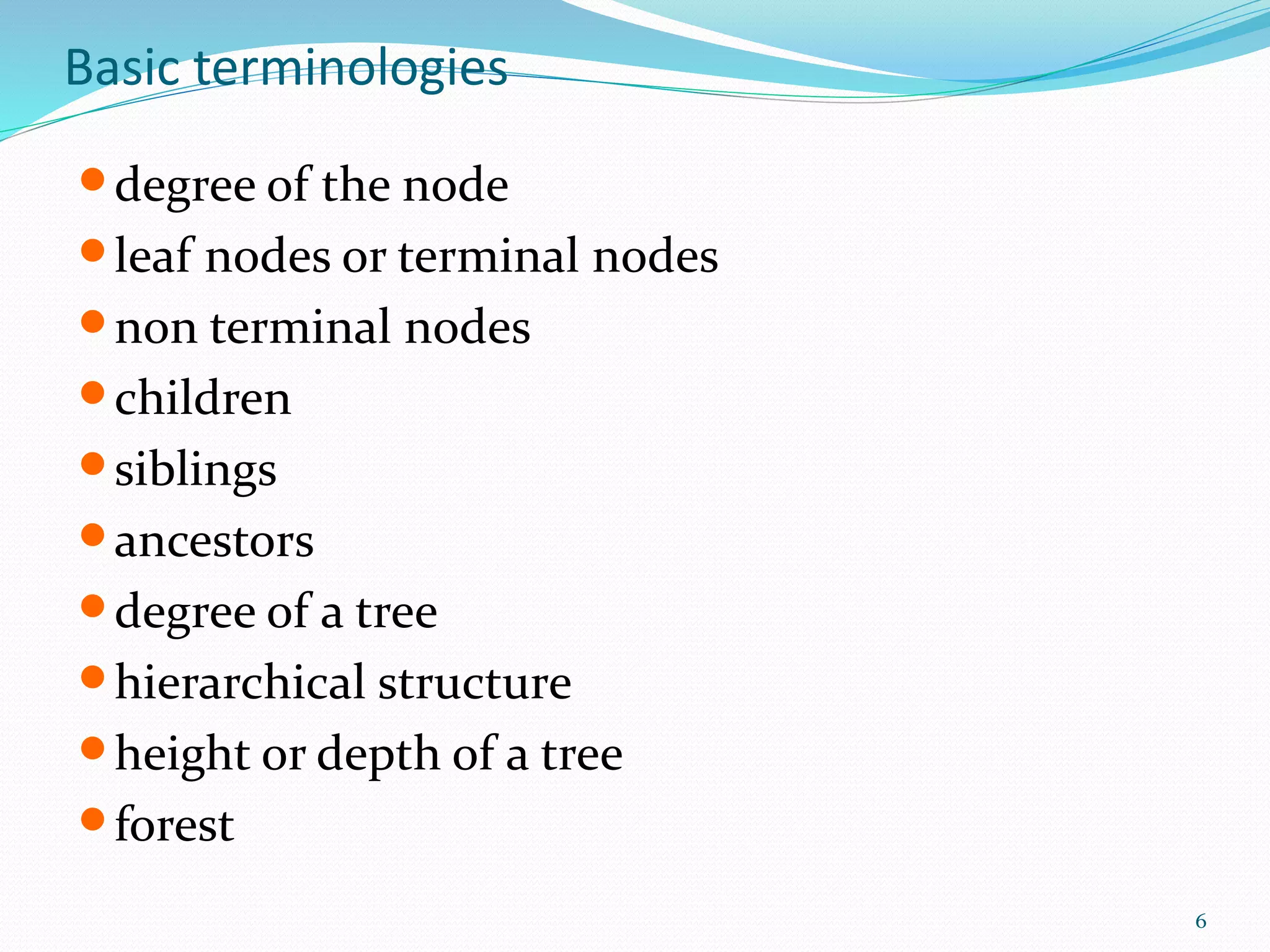
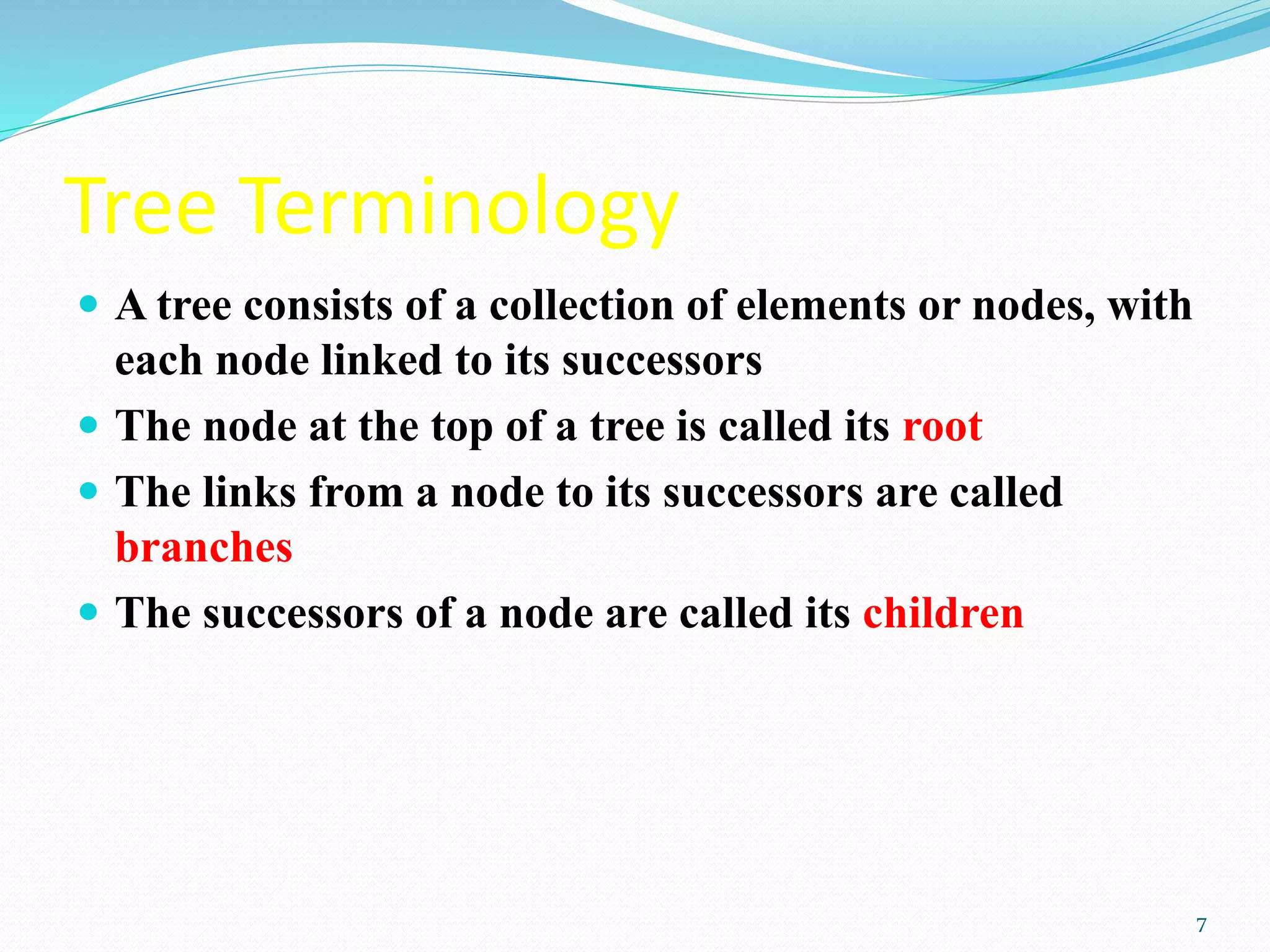
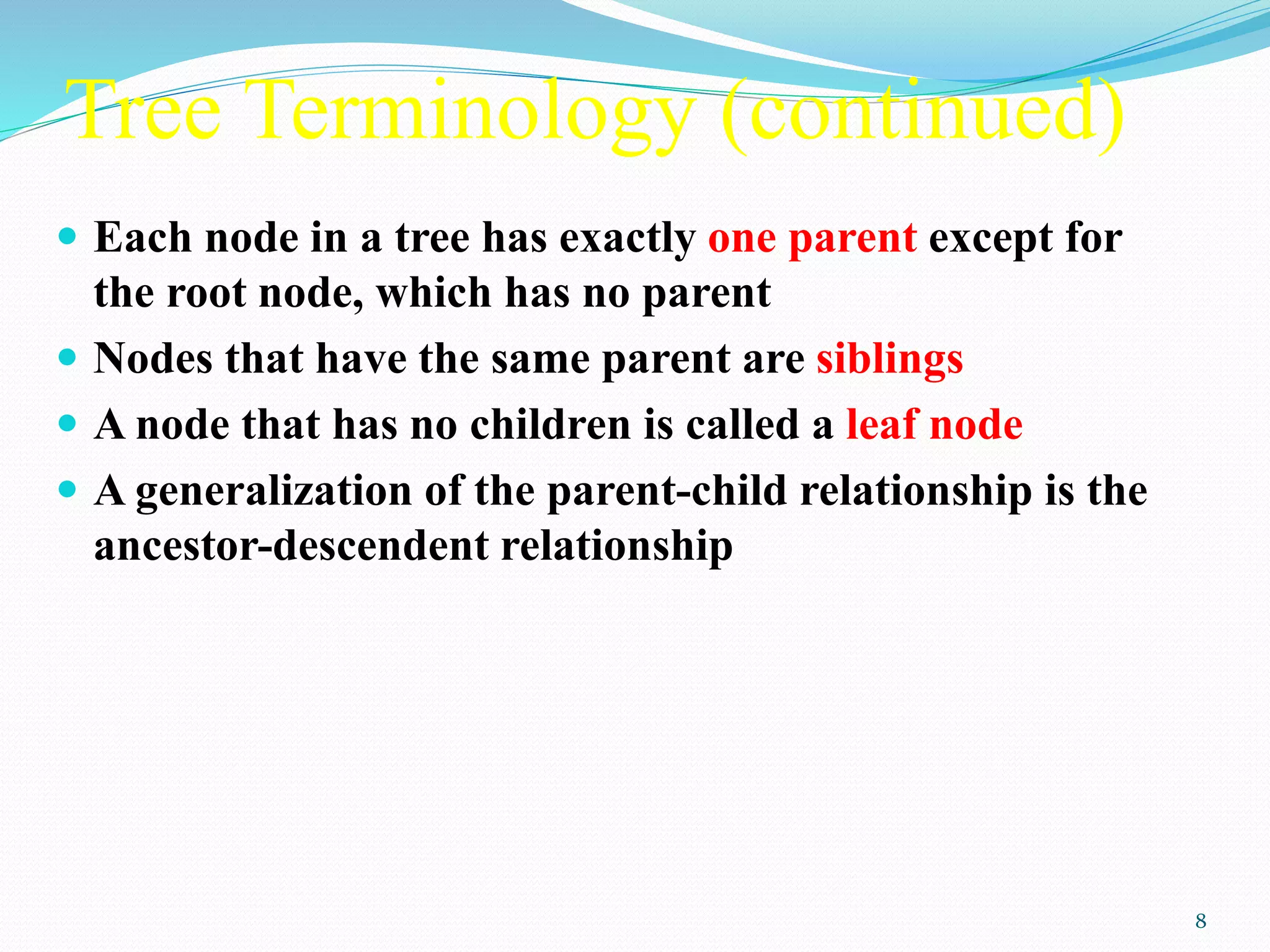
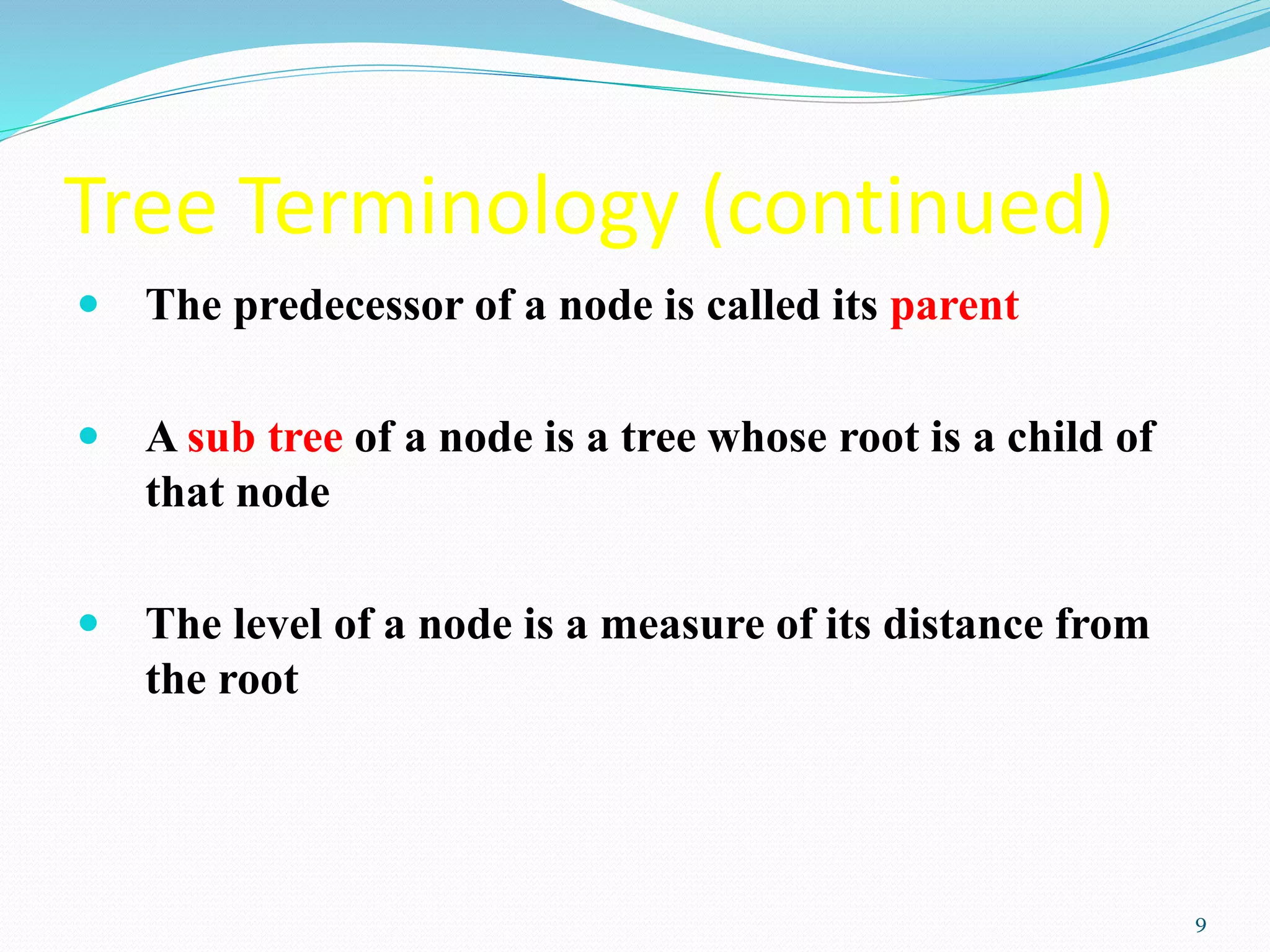
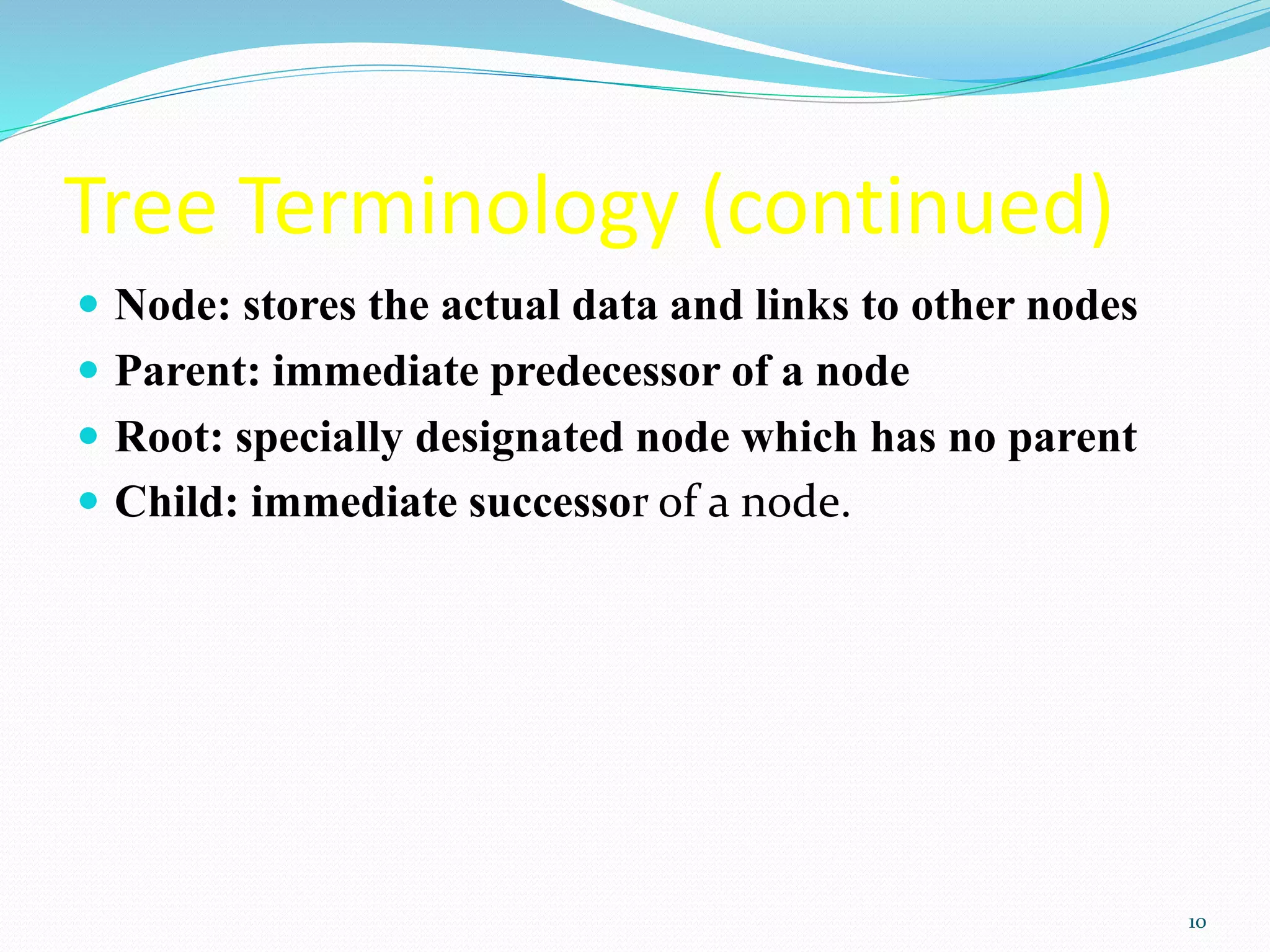
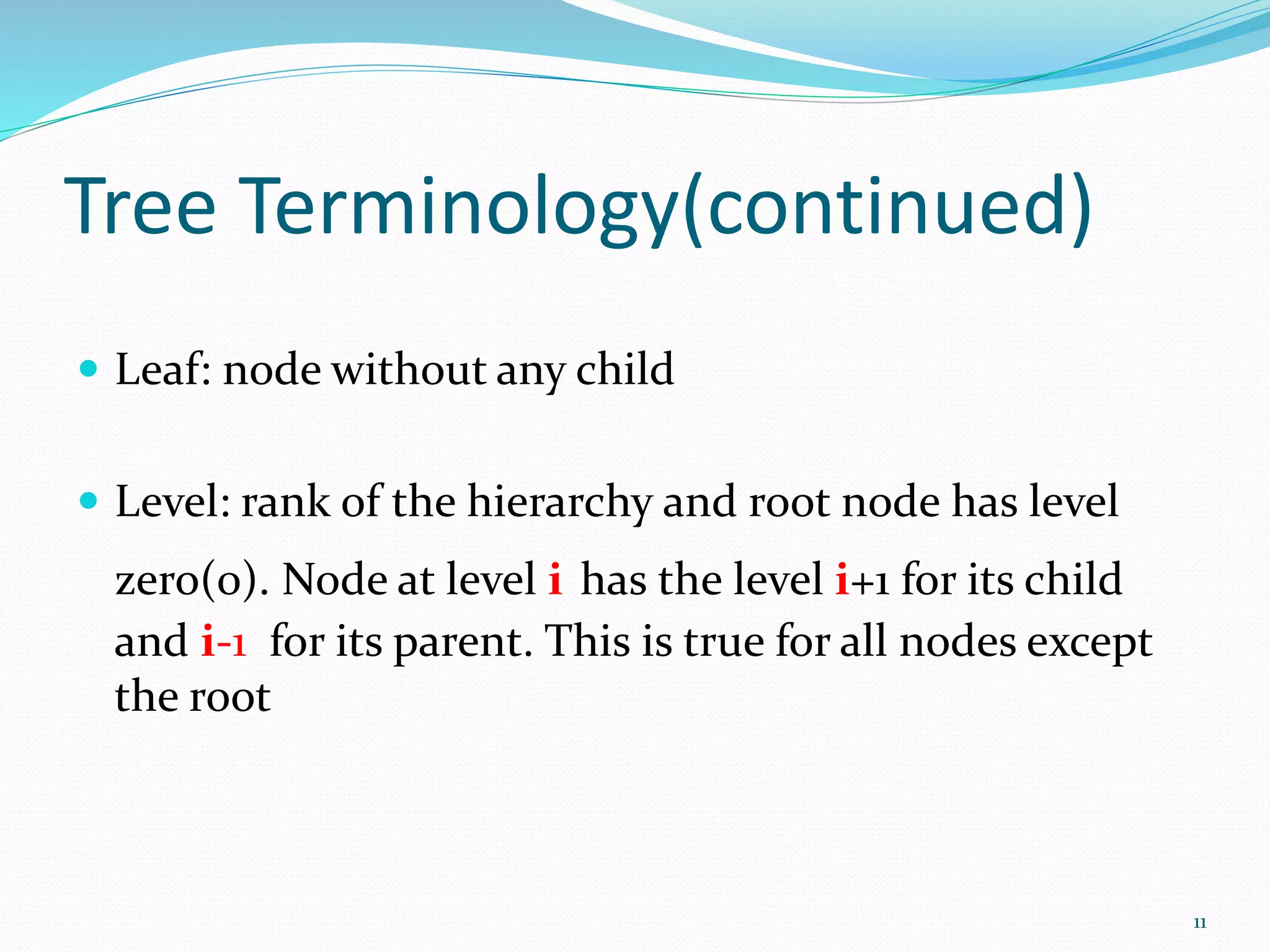
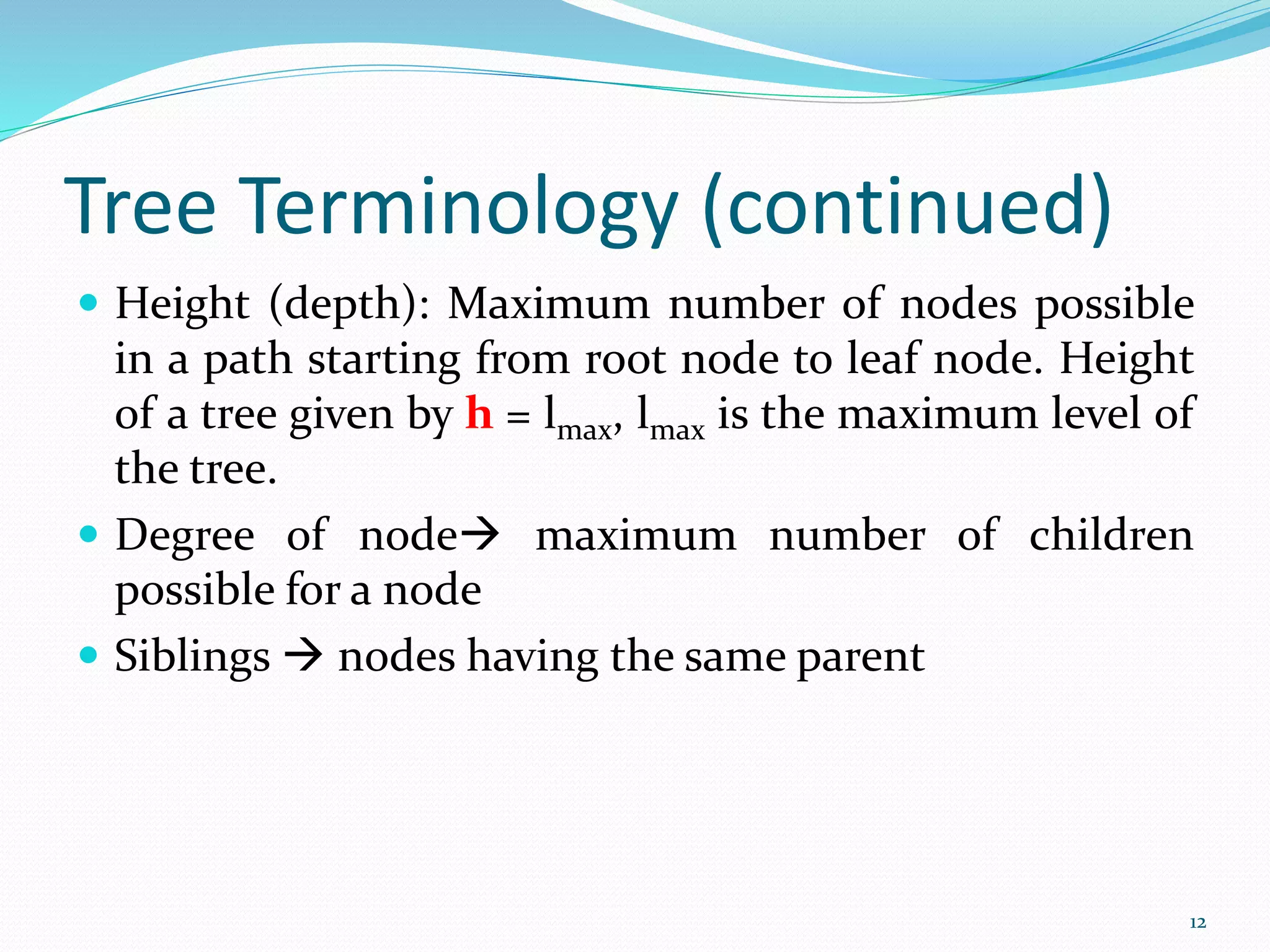
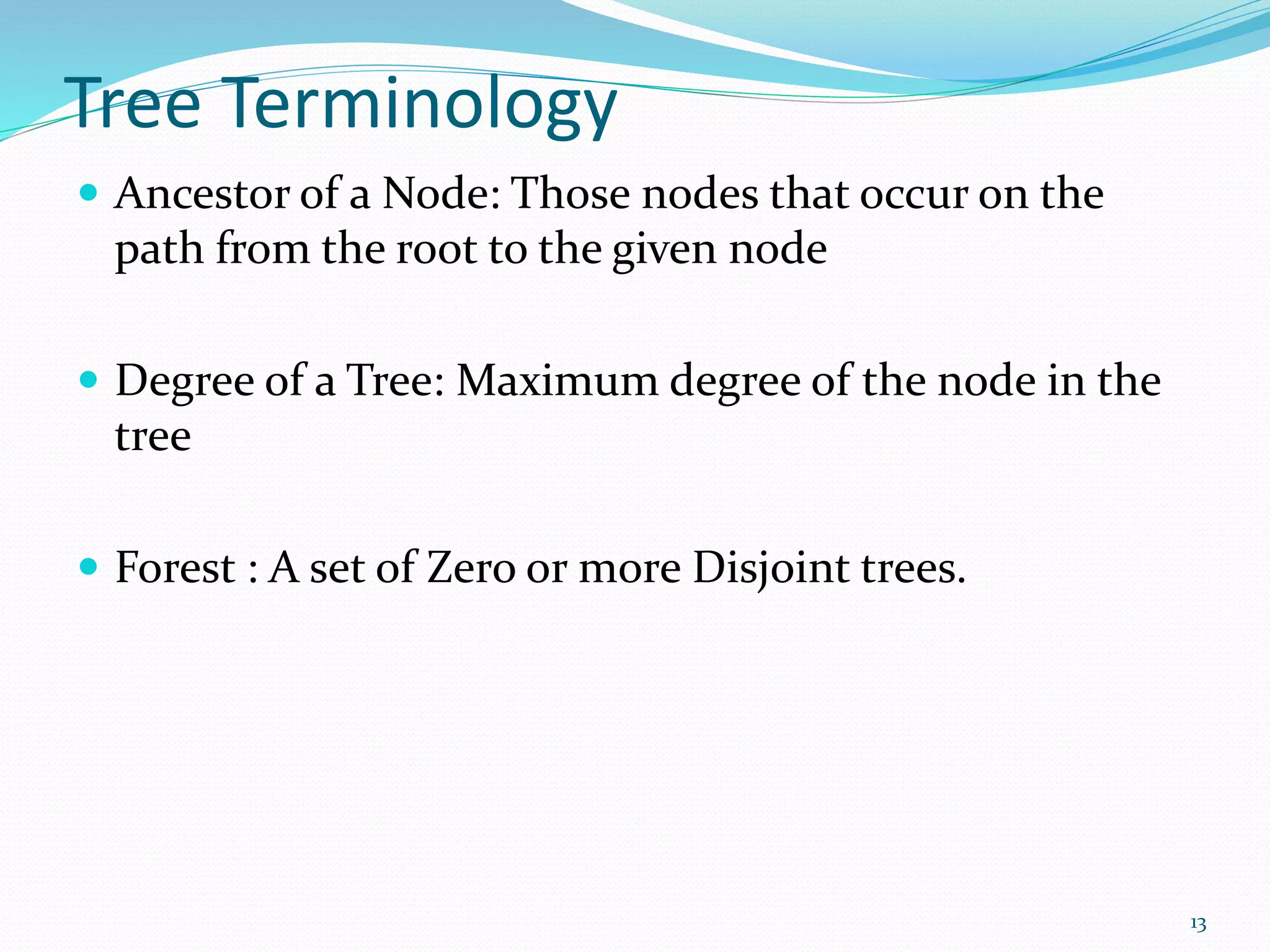
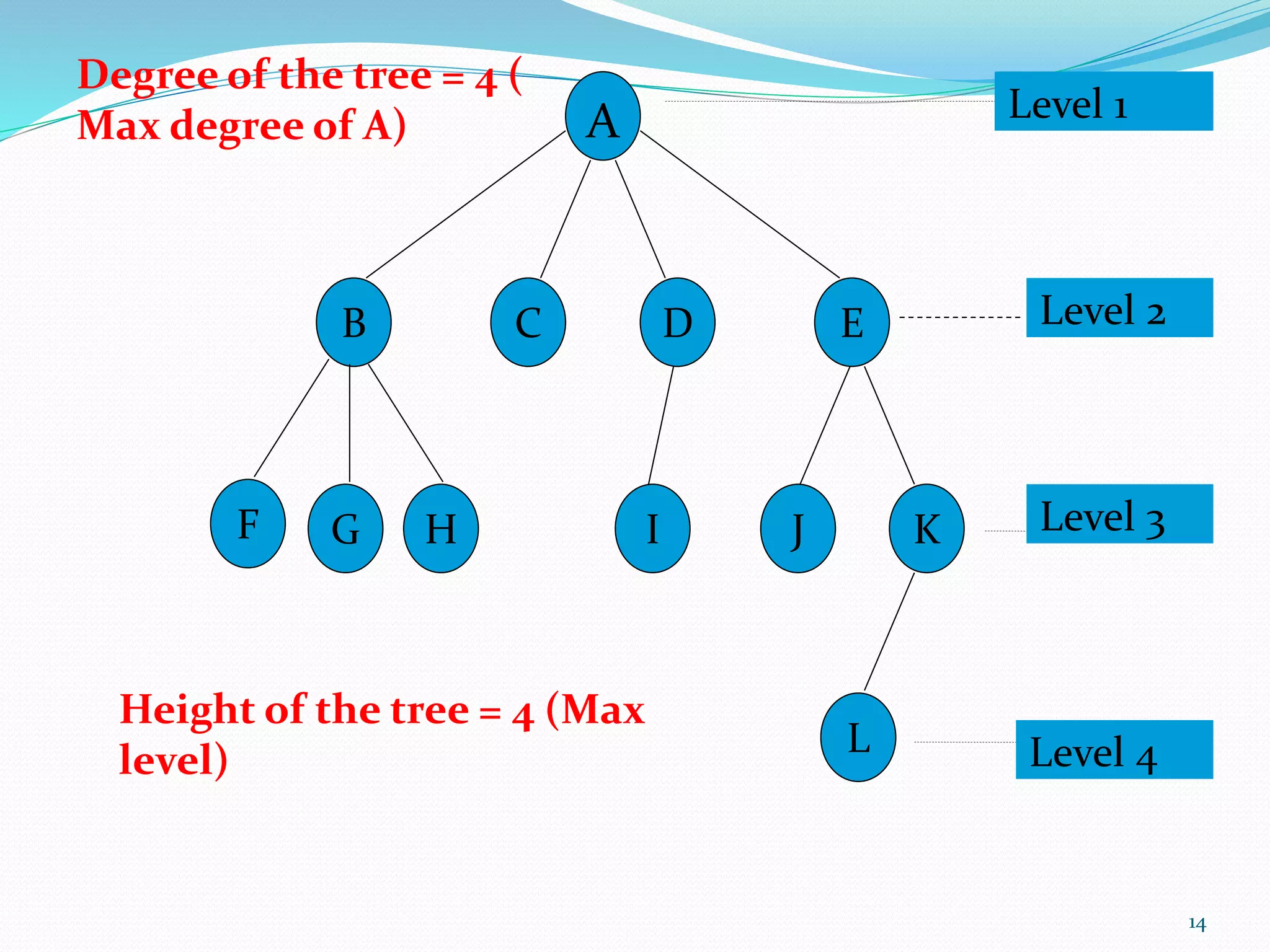
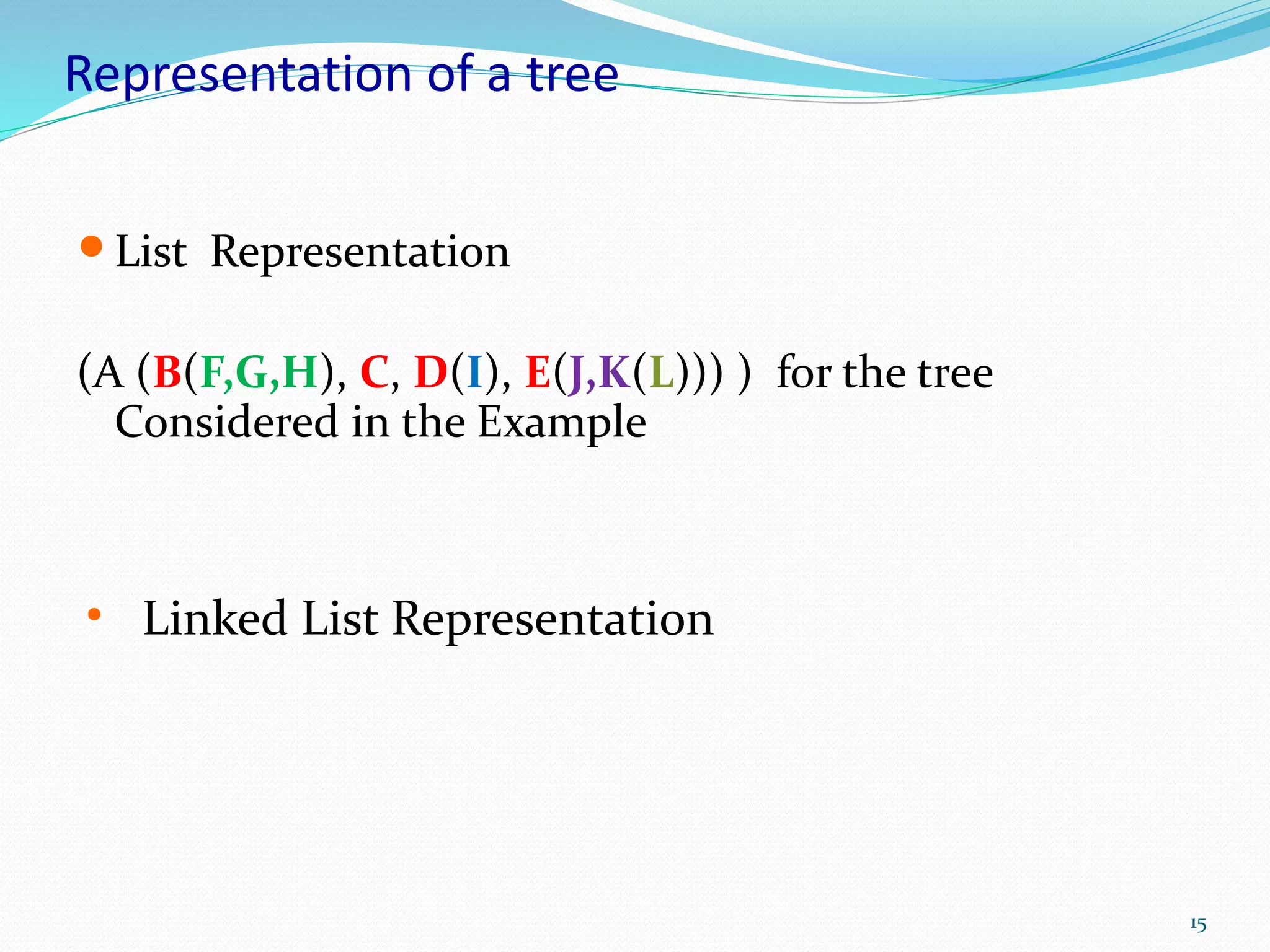
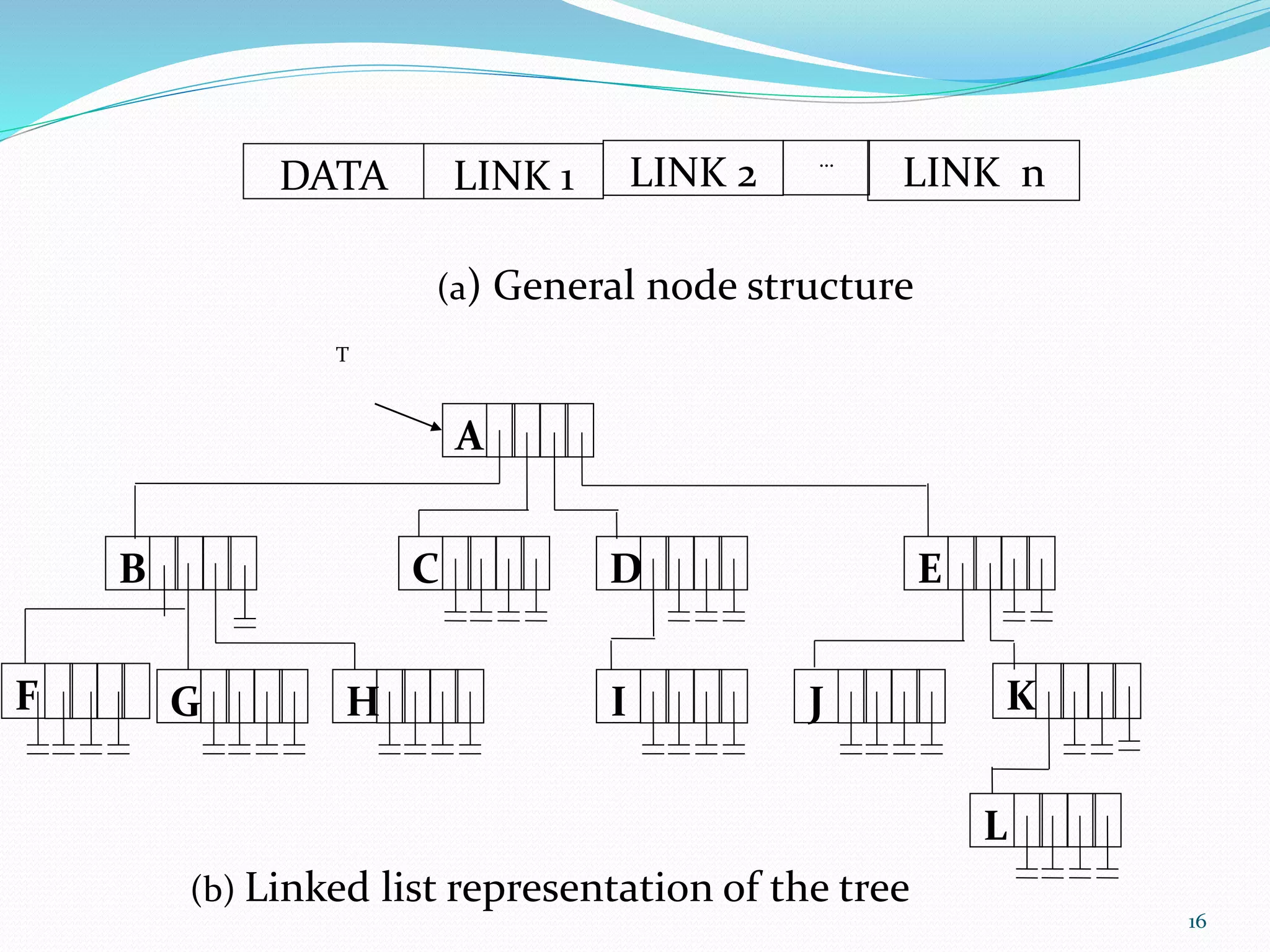
![Binary Trees A binary tree T is defined as a finite set of elements called nodes such that [a] T is empty (Called the Null tree or Empty tree) or [b] T contains a distinguished node R called the root of T and the remaining nodes of T form an ordered pair of disjoint binary trees T1 and T2 17](https://image.slidesharecdn.com/tree2-141117221136-conversion-gate01/75/non-linear-data-structure-introduction-of-tree-17-2048.jpg)
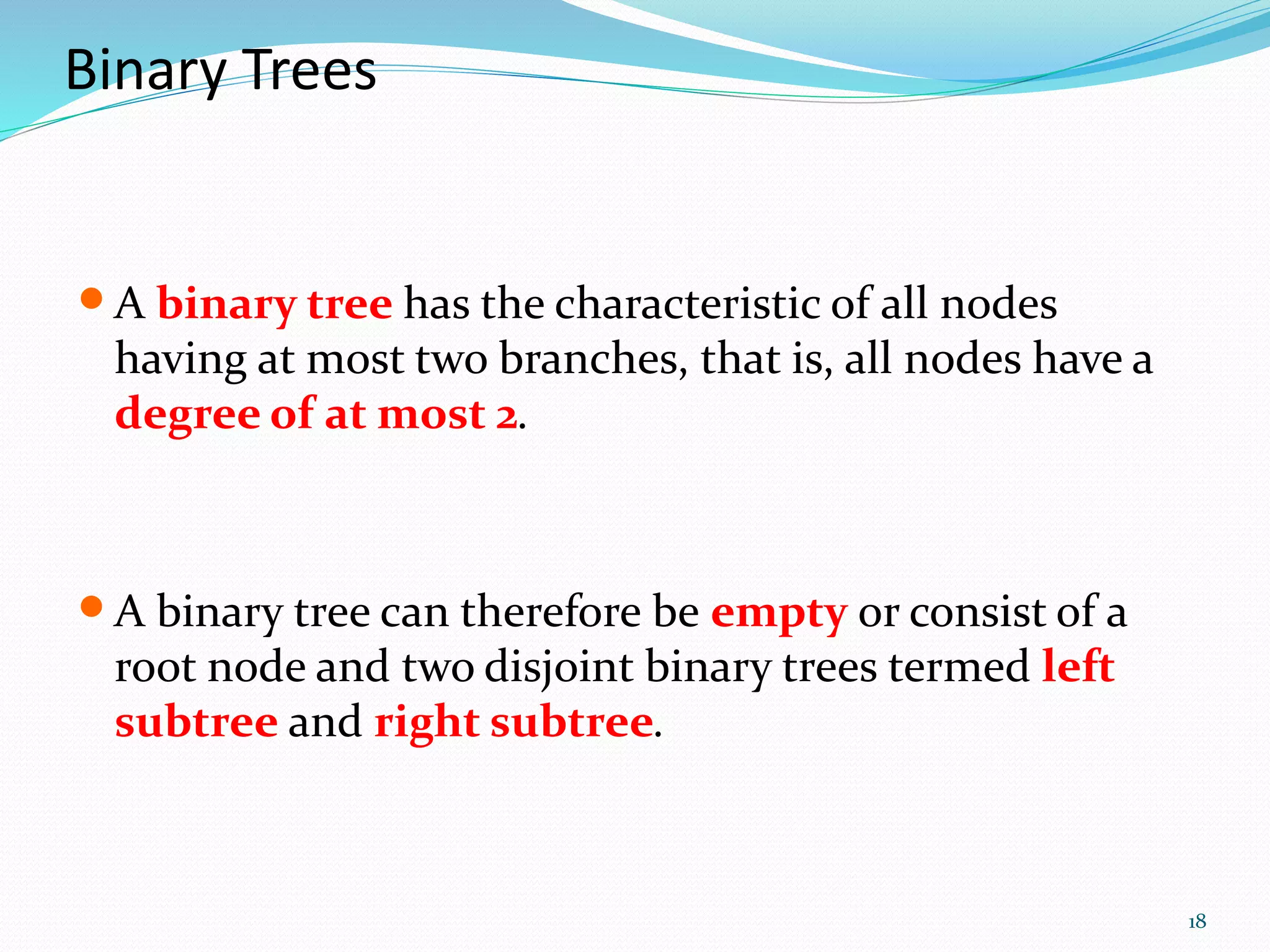
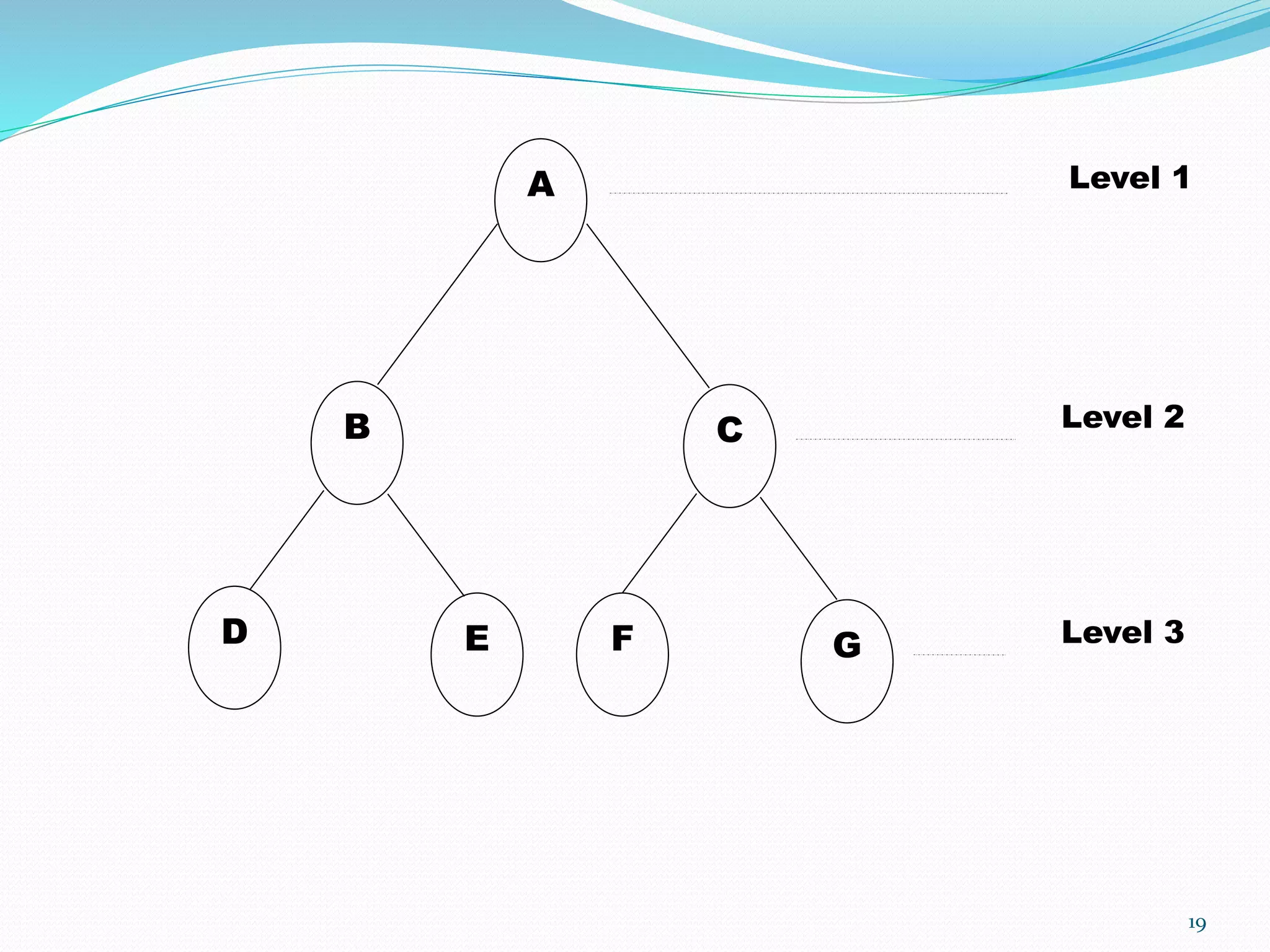
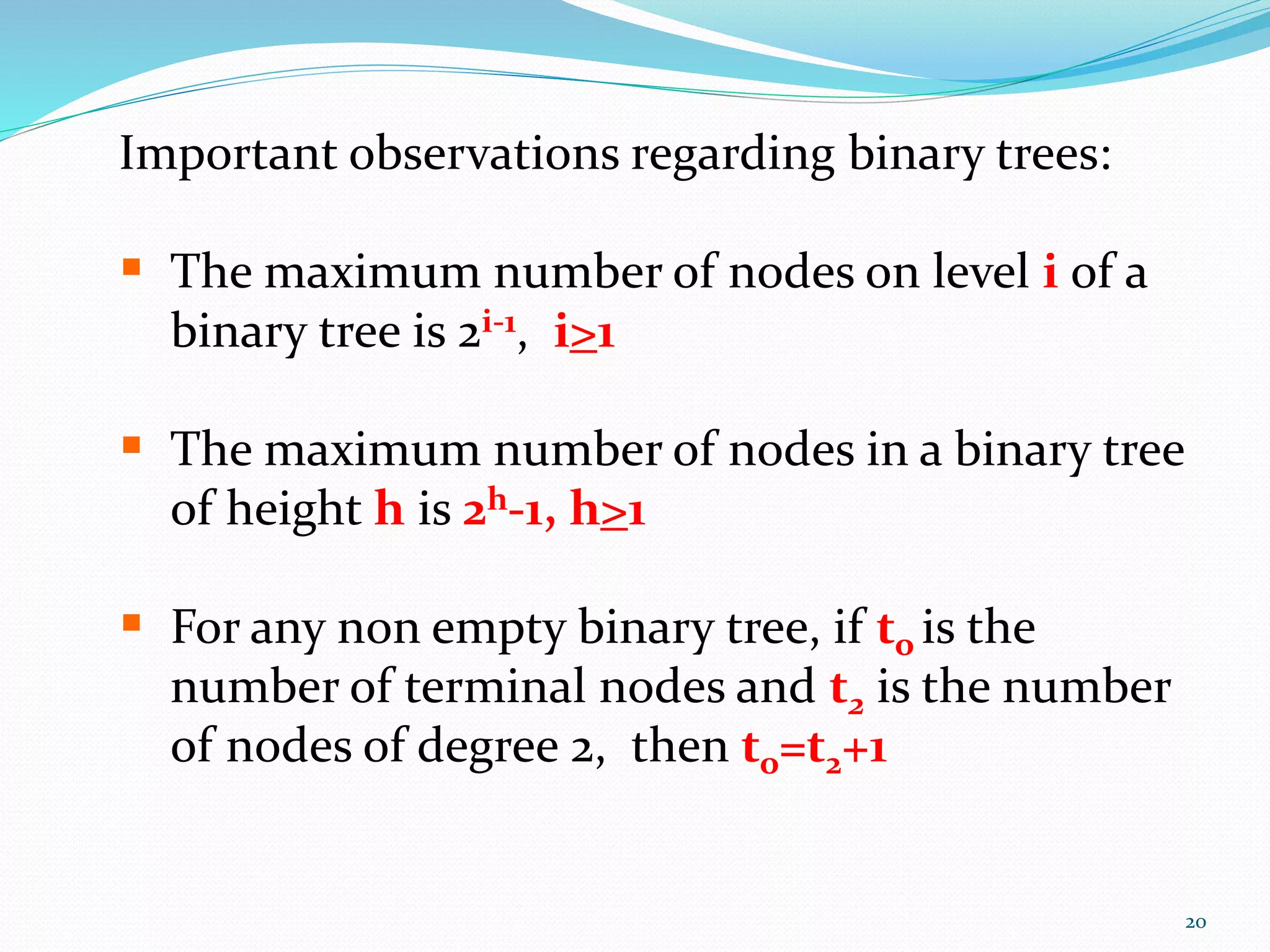
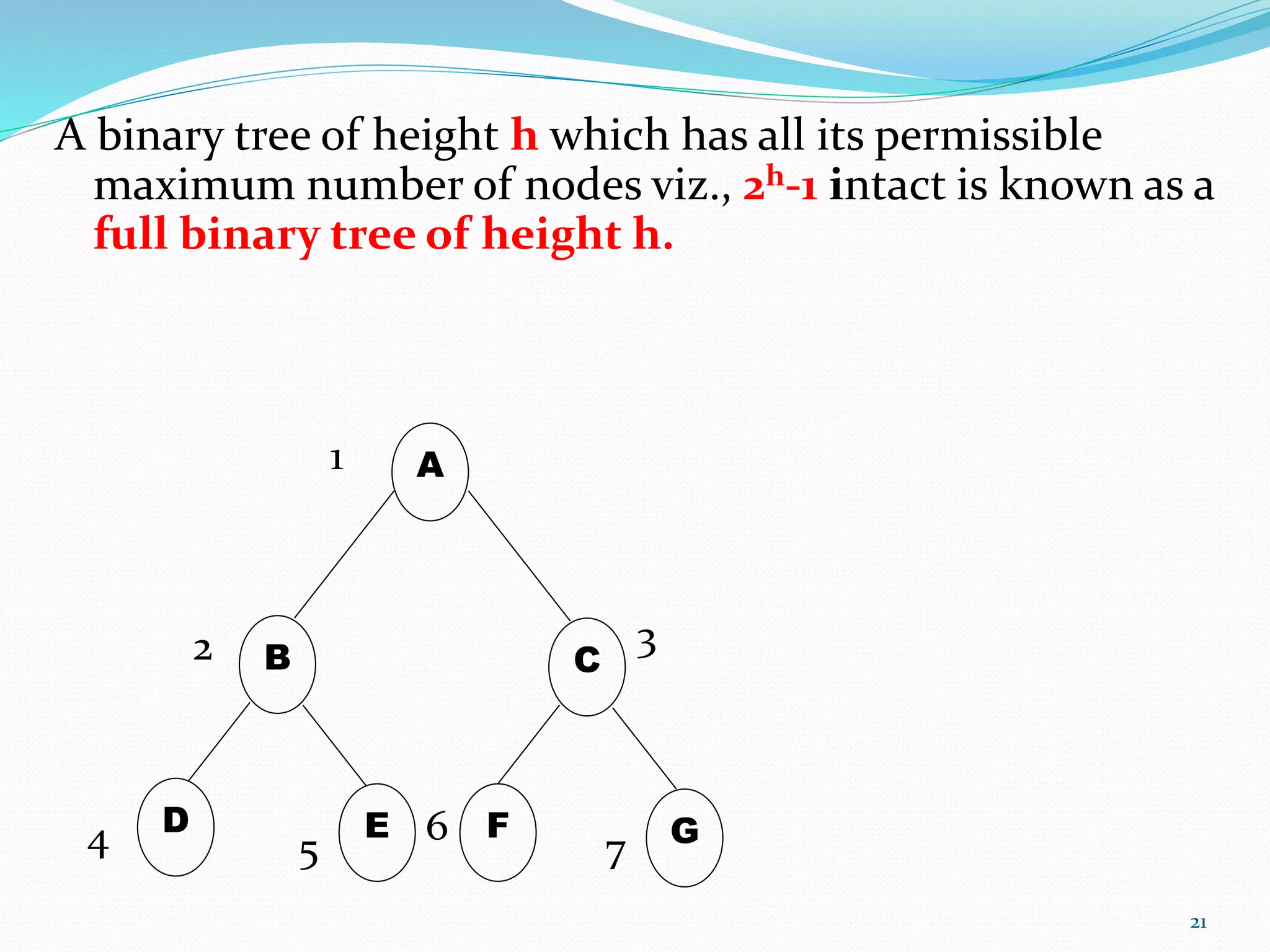
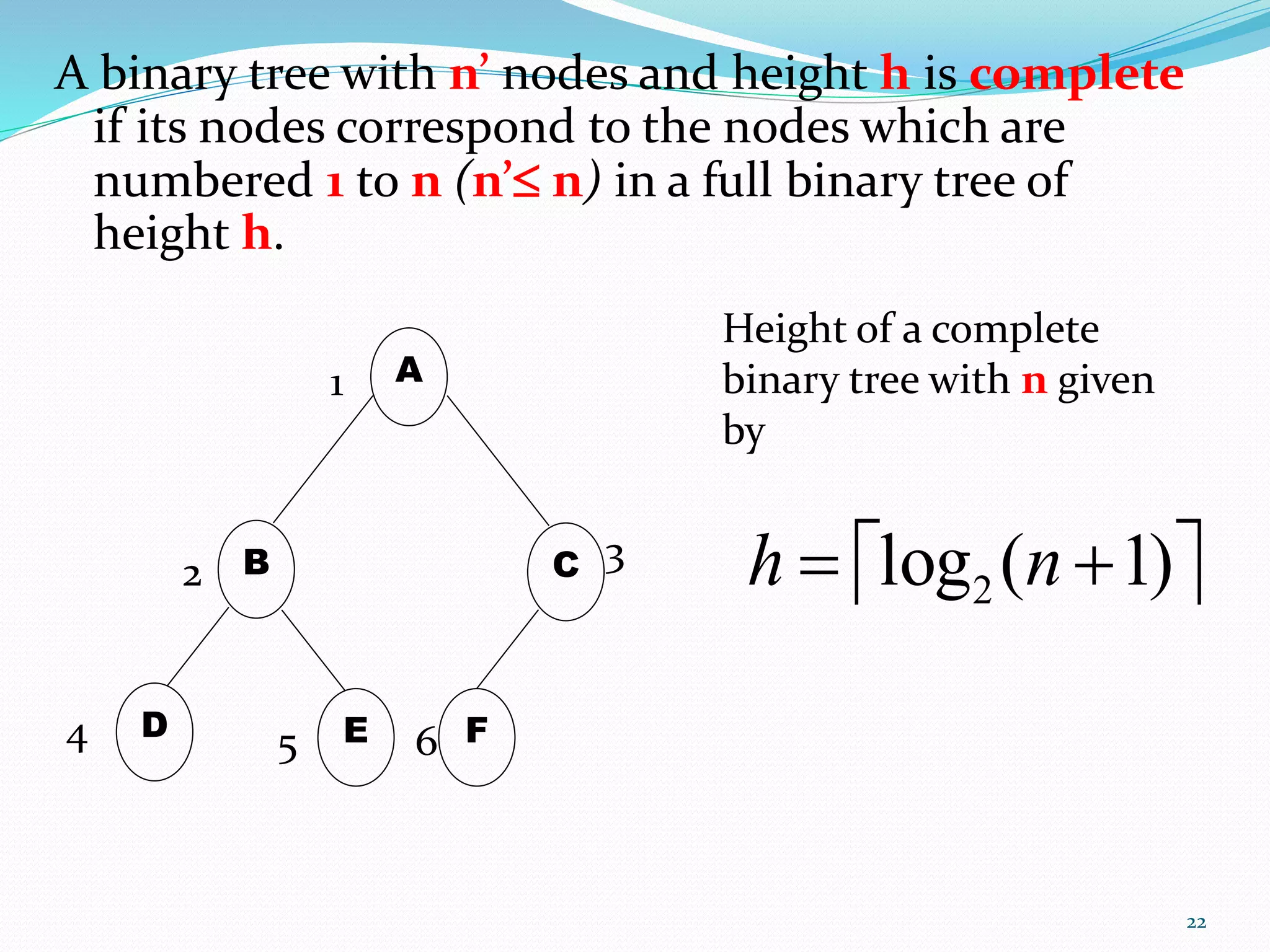
![A complete binary tree obeys the following properties with regard to its node numbering: [a] If a parent node has a number i then its left child has the number 2i (2i < n). If 2i > n then i has no left child. [b] If a parent node has a number i, then its right child has the number 2i+1 (2i + 1 <n). If 2i + 1 > n then i has no right child. 23](https://image.slidesharecdn.com/tree2-141117221136-conversion-gate01/75/non-linear-data-structure-introduction-of-tree-23-2048.jpg)
![A complete binary tree obeys the following properties with regard to its node numbering: [c] If a child node (left or right) has a number i then the parent node has the number i /2 if i 1. If i =1 then i is the root and hence has no parent. 24](https://image.slidesharecdn.com/tree2-141117221136-conversion-gate01/75/non-linear-data-structure-introduction-of-tree-24-2048.jpg)
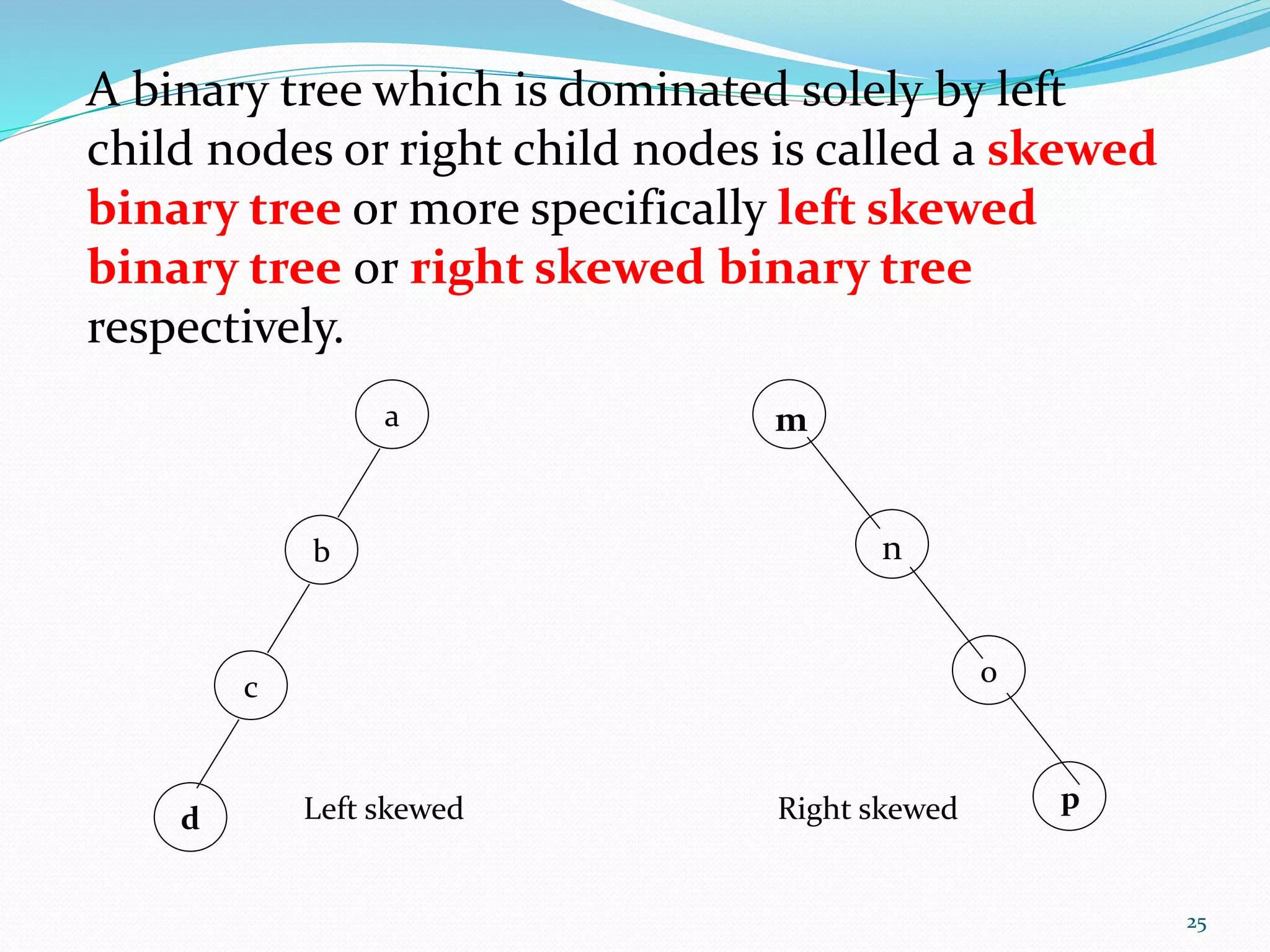
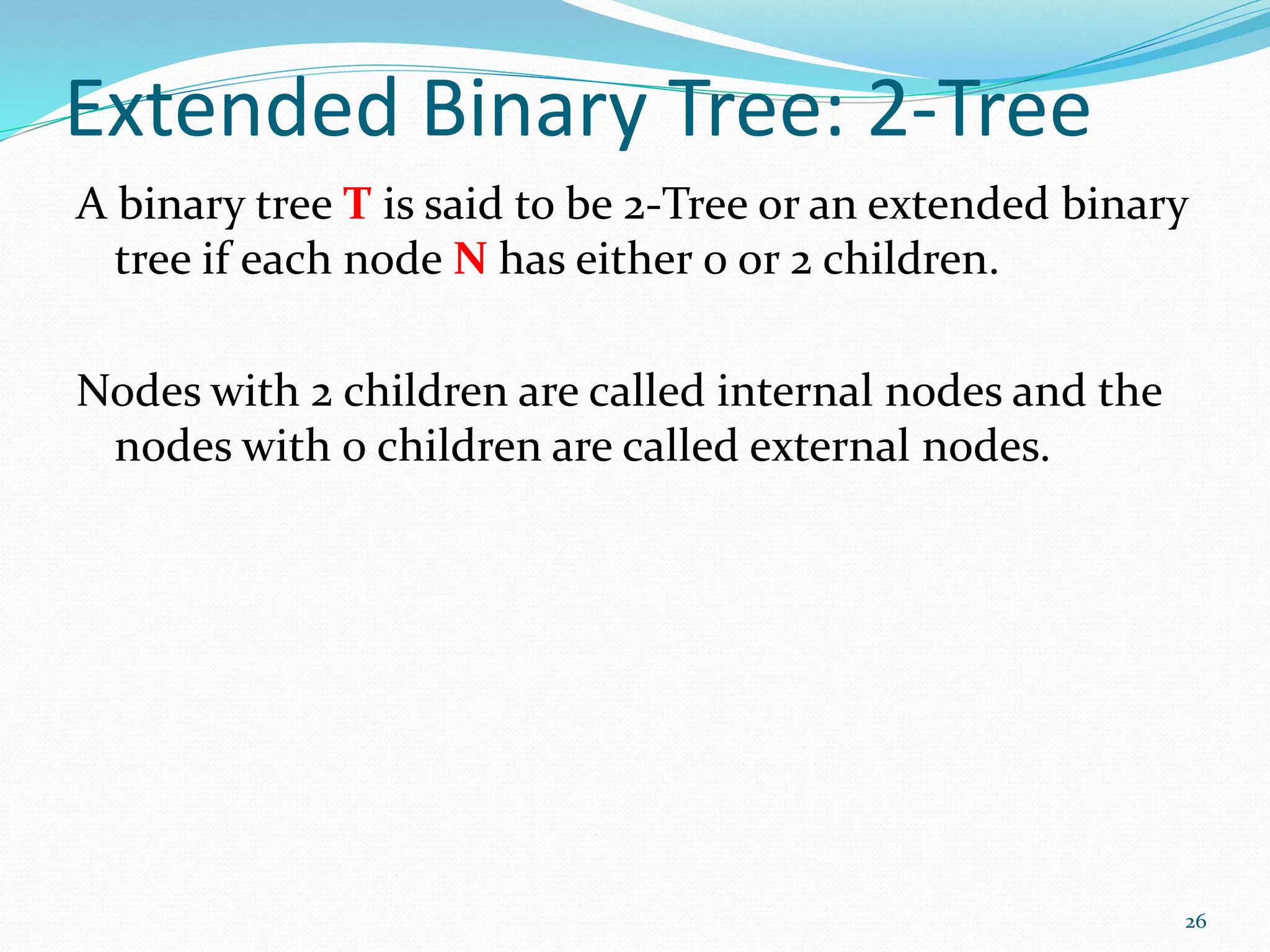
![Representation of Binary Tree Binary tree can be represented by means of [a] Array [b] linked list 27](https://image.slidesharecdn.com/tree2-141117221136-conversion-gate01/75/non-linear-data-structure-introduction-of-tree-27-2048.jpg)
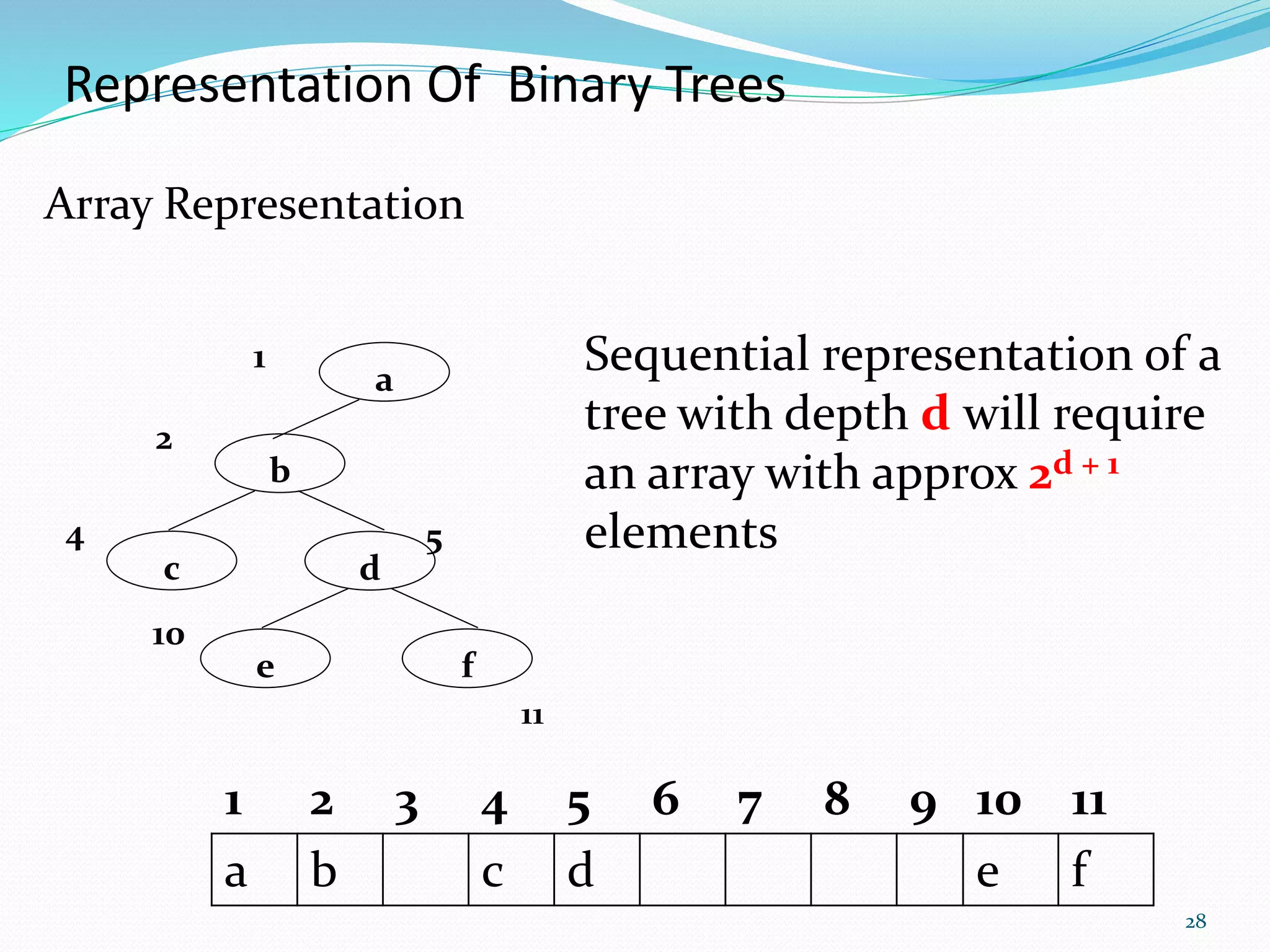
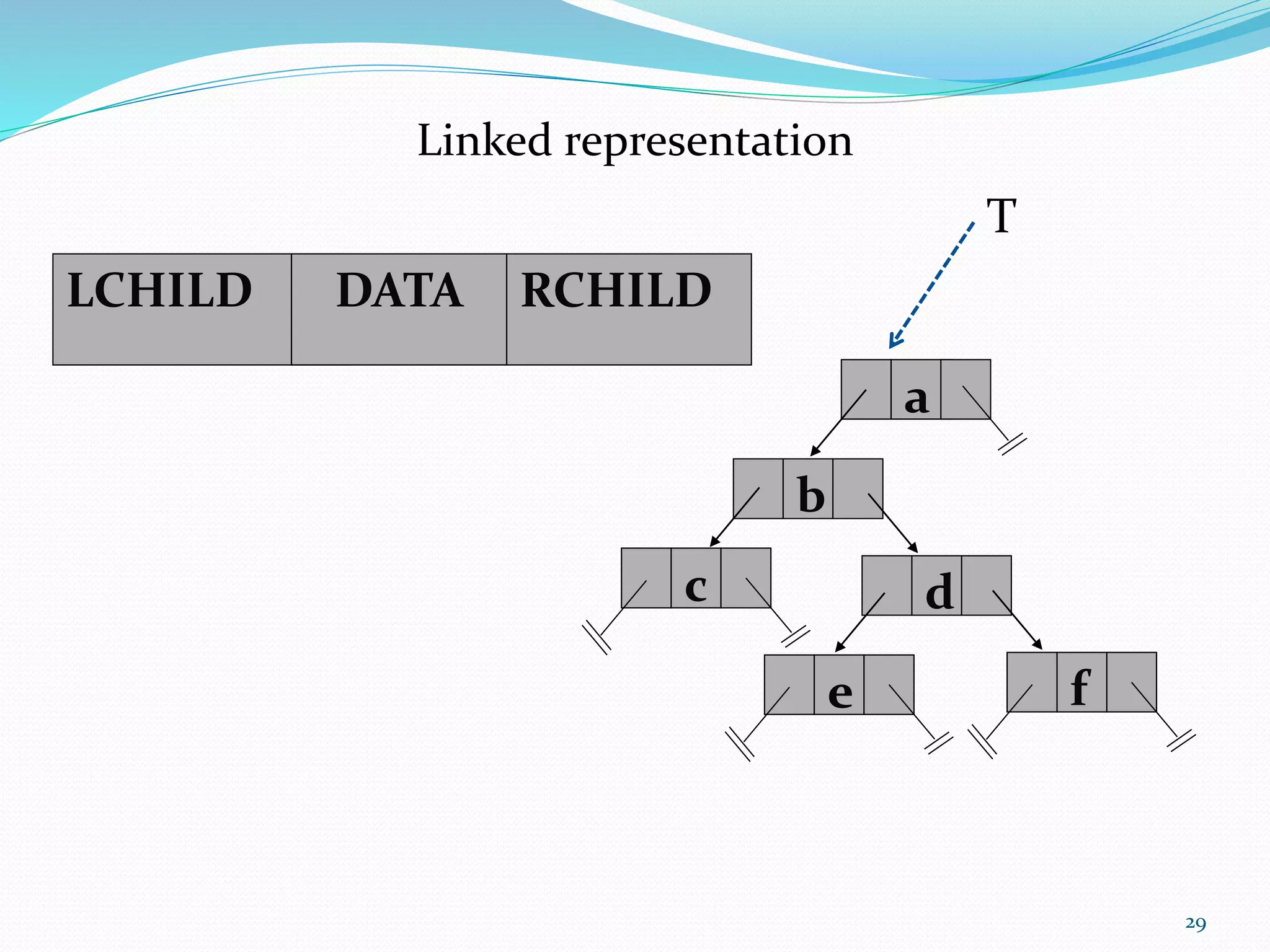
![ Observation regarding the linked representation of Binary Tree [a] If a binary tree has n nodes then the number of pointers used in its linked representation is 2 * n [b] The number of null pointers used in the linked representation of a binary tree with n nodes is n + 1 30](https://image.slidesharecdn.com/tree2-141117221136-conversion-gate01/75/non-linear-data-structure-introduction-of-tree-30-2048.jpg)
![Traversing Binary Tree Three ways of traversing the binary tree T with root R Preorder [a] Process the root R [b] Traverse the left sub-tree of R in preorder [c] Traverse the right sub-tree of R in preorder 31 a. k. a node-left-right traversal (NLR)](https://image.slidesharecdn.com/tree2-141117221136-conversion-gate01/75/non-linear-data-structure-introduction-of-tree-31-2048.jpg)
![Traversing Binary Tree In-order [a] Traverse the left sub-tree of R in in-order [b] Process the root R [c] Traverse the right sub-tree of R in in-order 32 a. k. a left-node-right traversal (LNR)](https://image.slidesharecdn.com/tree2-141117221136-conversion-gate01/75/non-linear-data-structure-introduction-of-tree-32-2048.jpg)
![Traversing Binary Tree Post-order [a] Traverse the left sub-tree of R in post-order [b] Traverse the right sub-tree of R in post-order [c] Process the root R 33 a. k. a left-right-node traversal (LRN)](https://image.slidesharecdn.com/tree2-141117221136-conversion-gate01/75/non-linear-data-structure-introduction-of-tree-33-2048.jpg)
